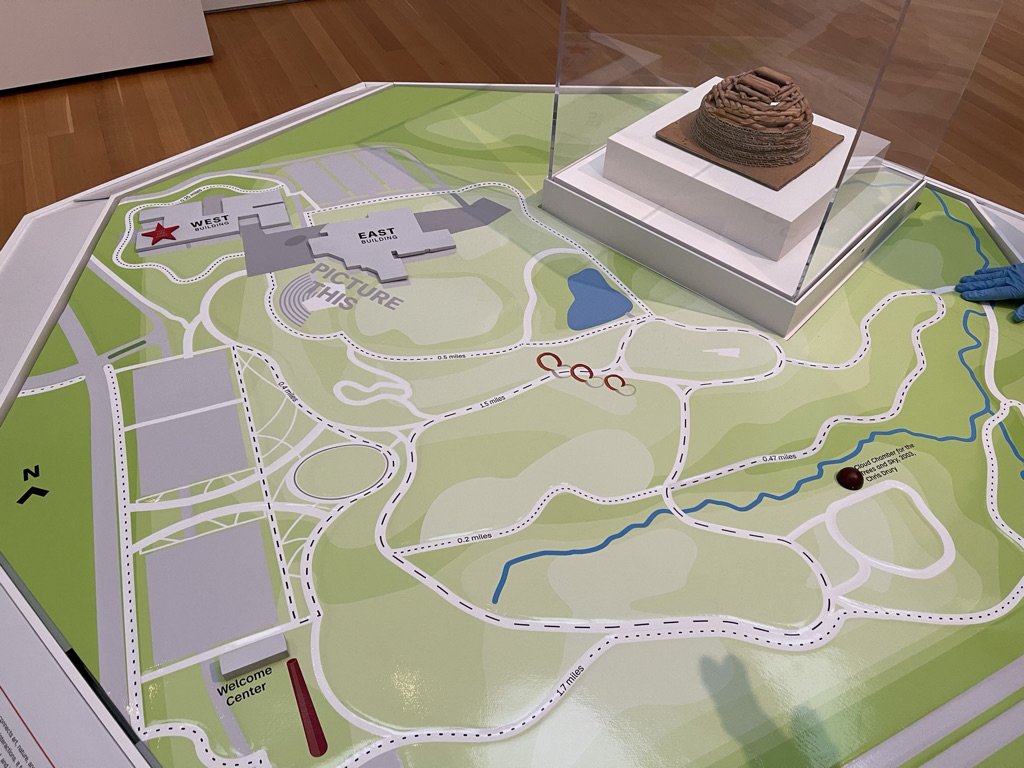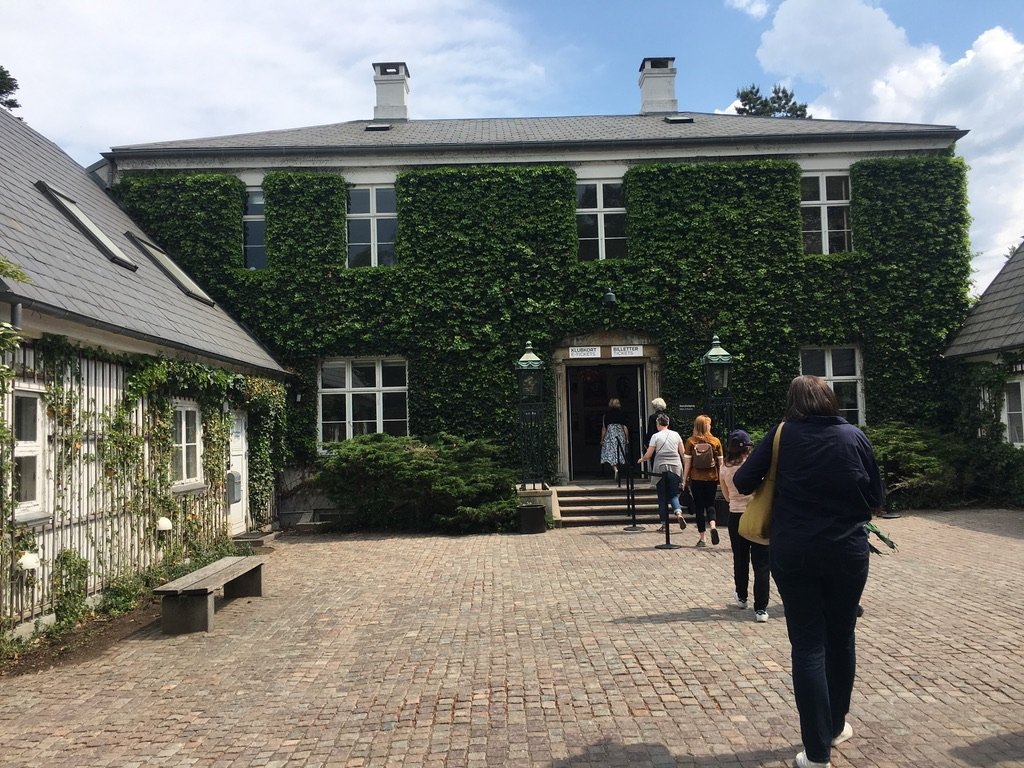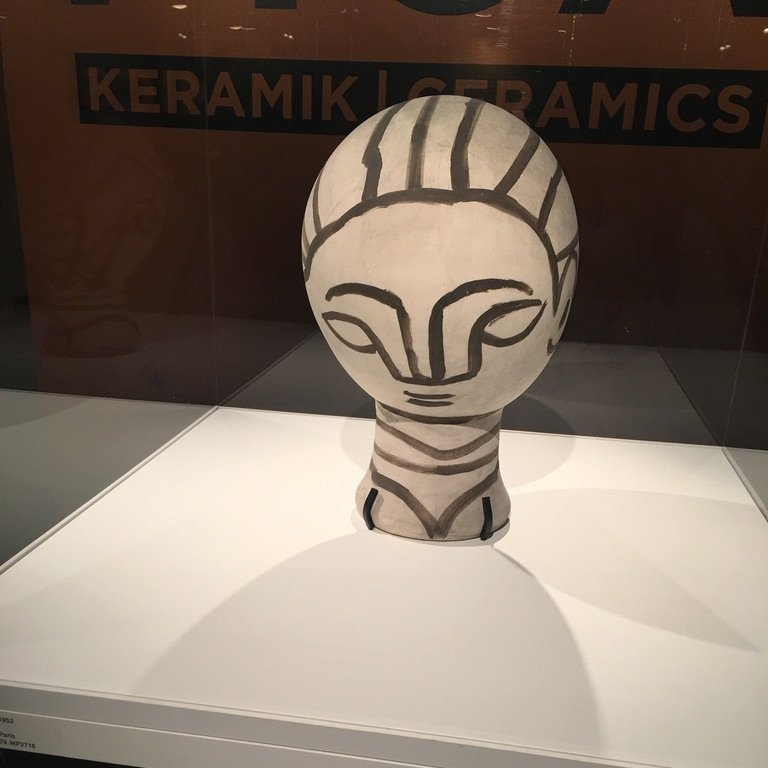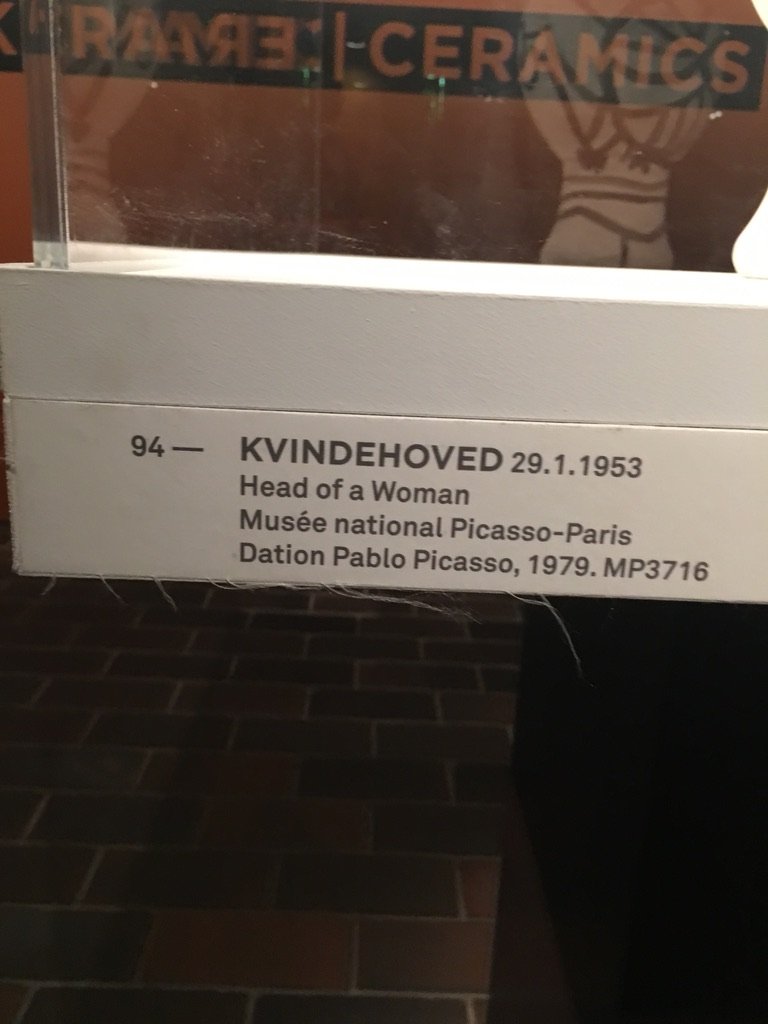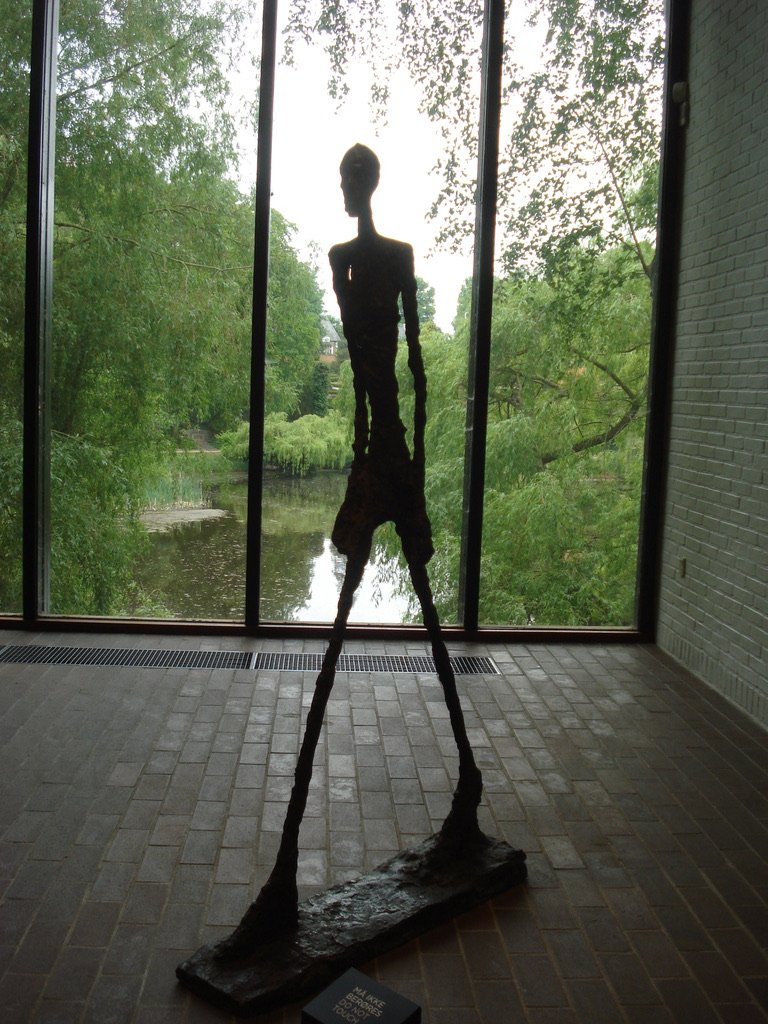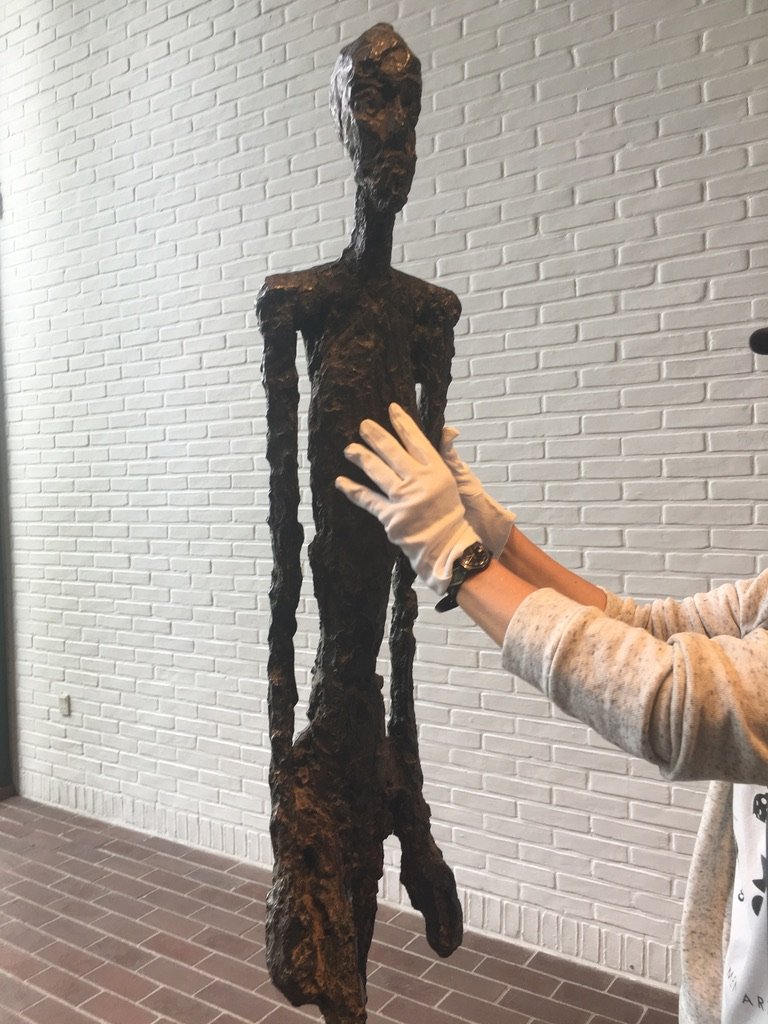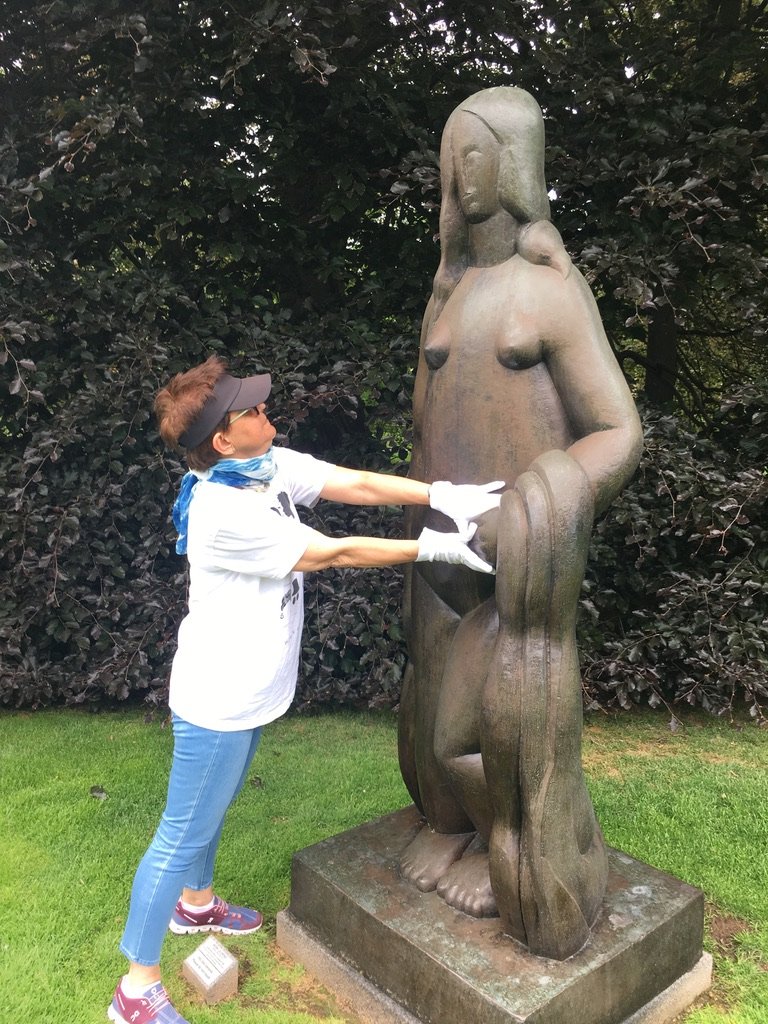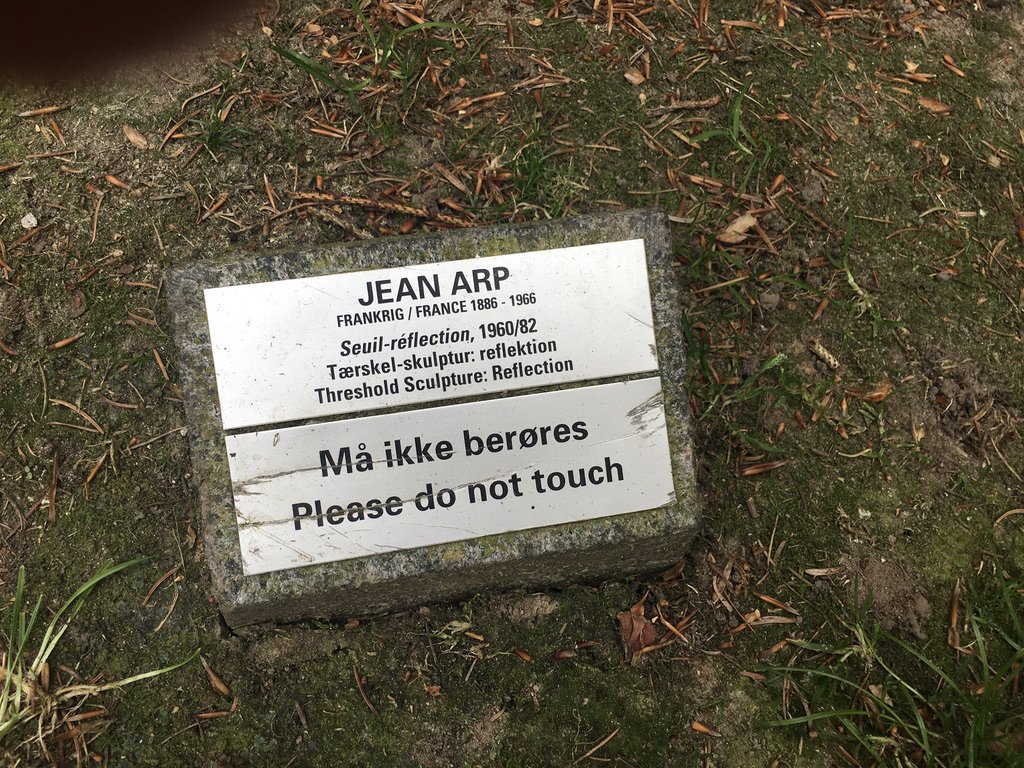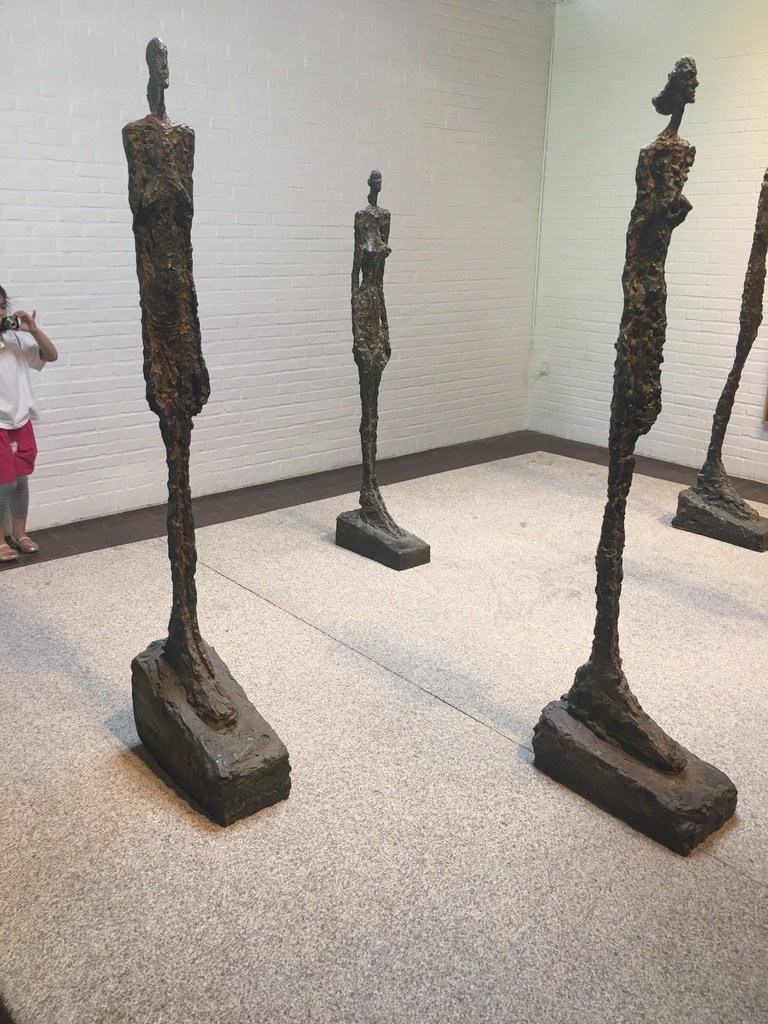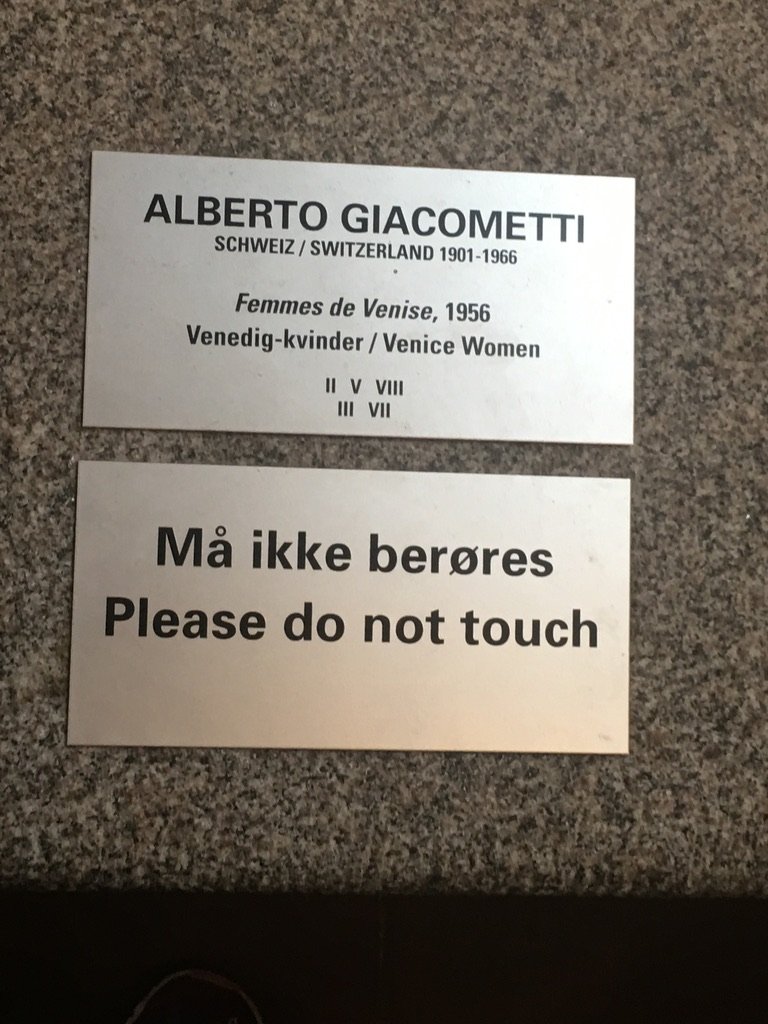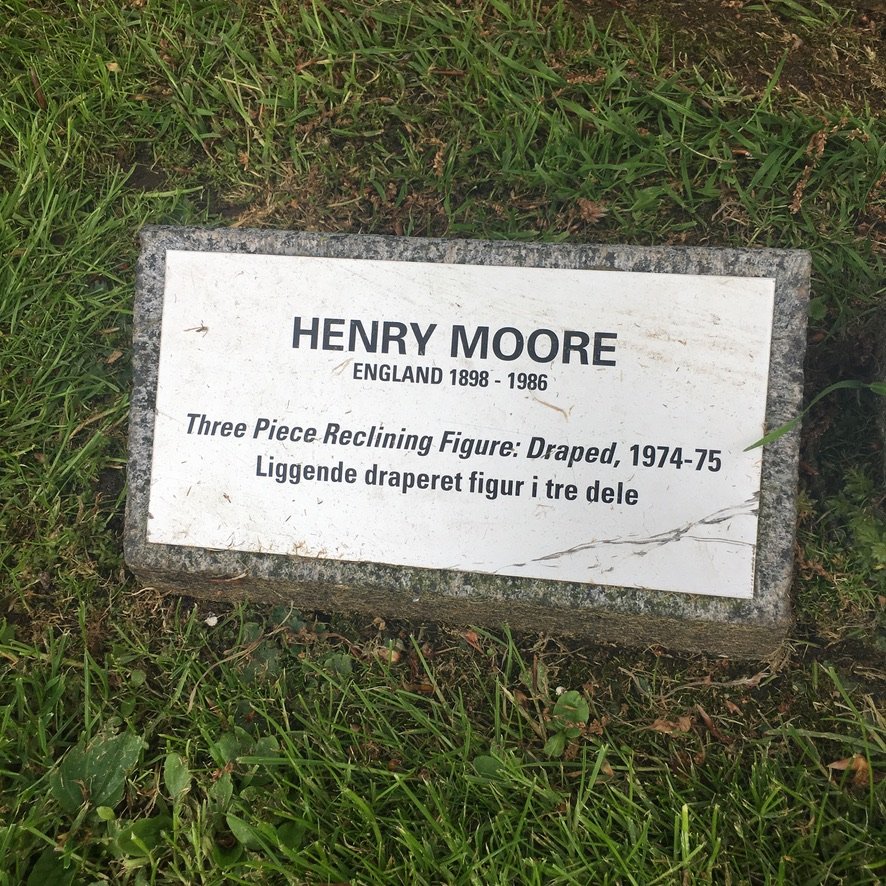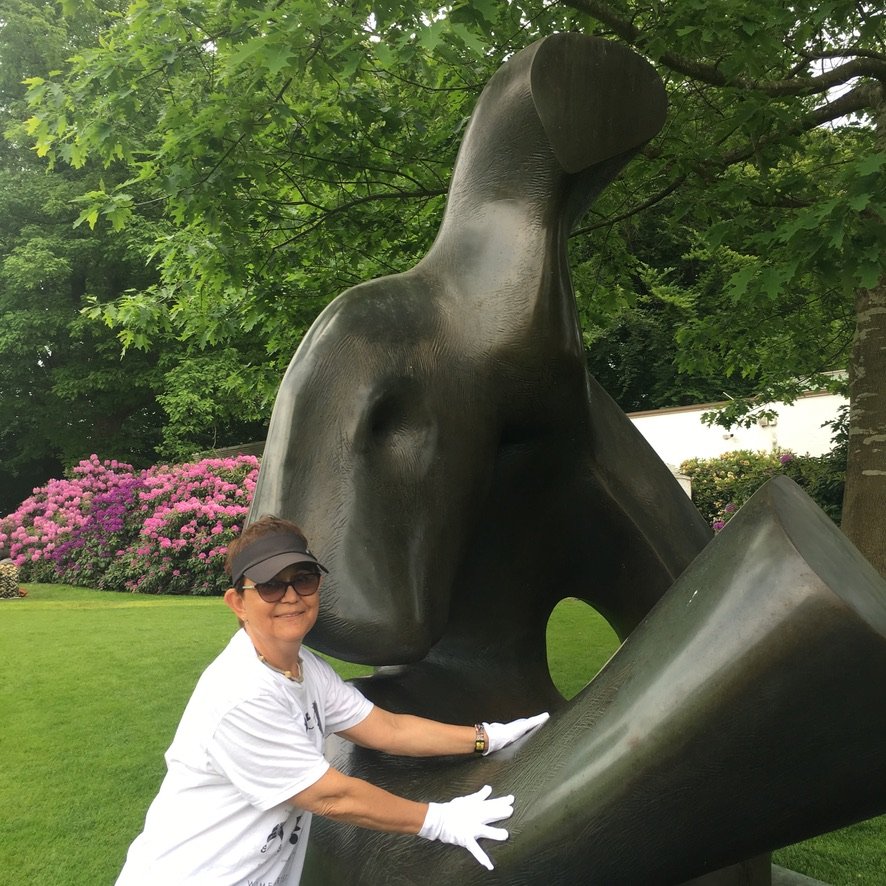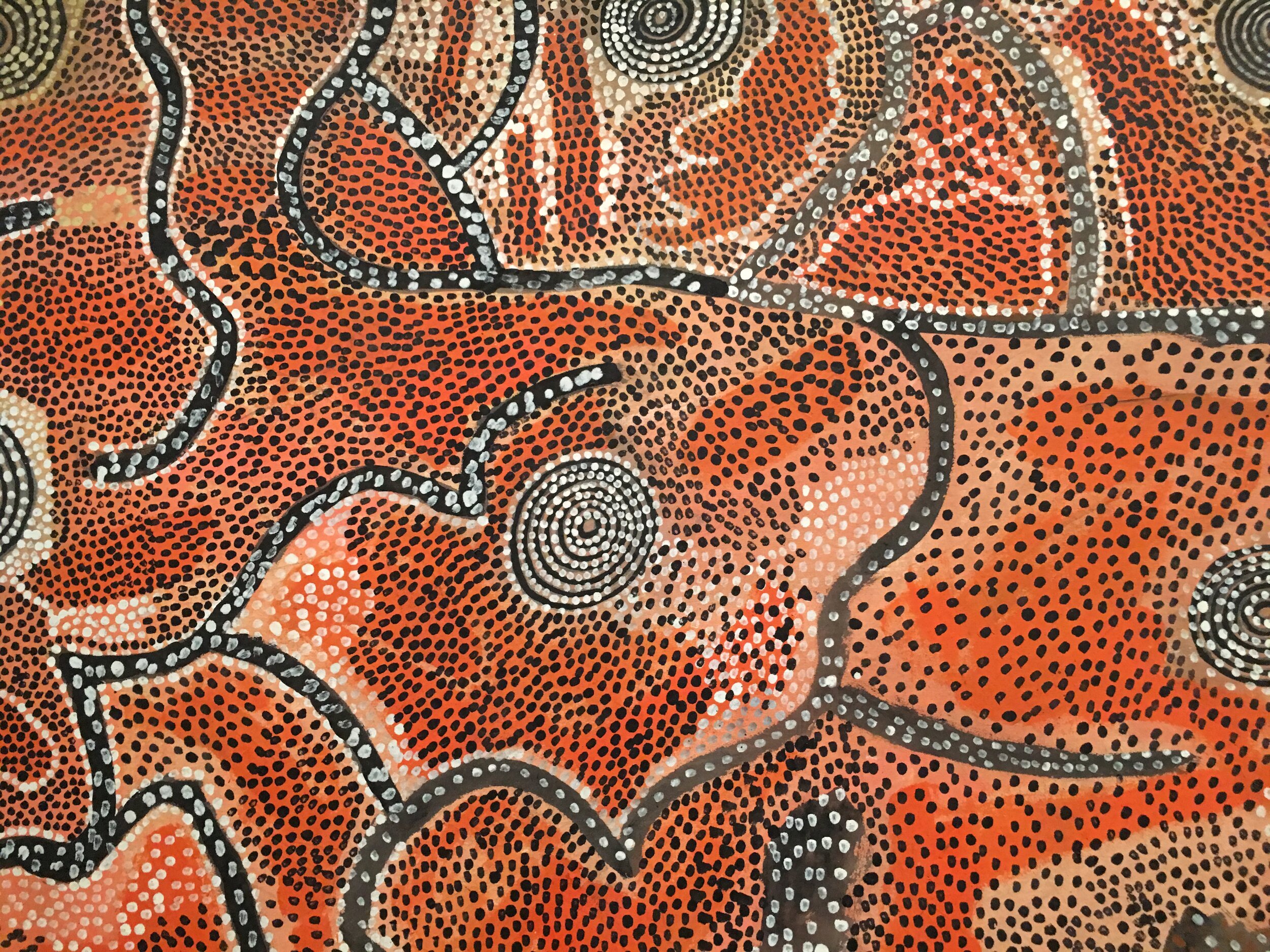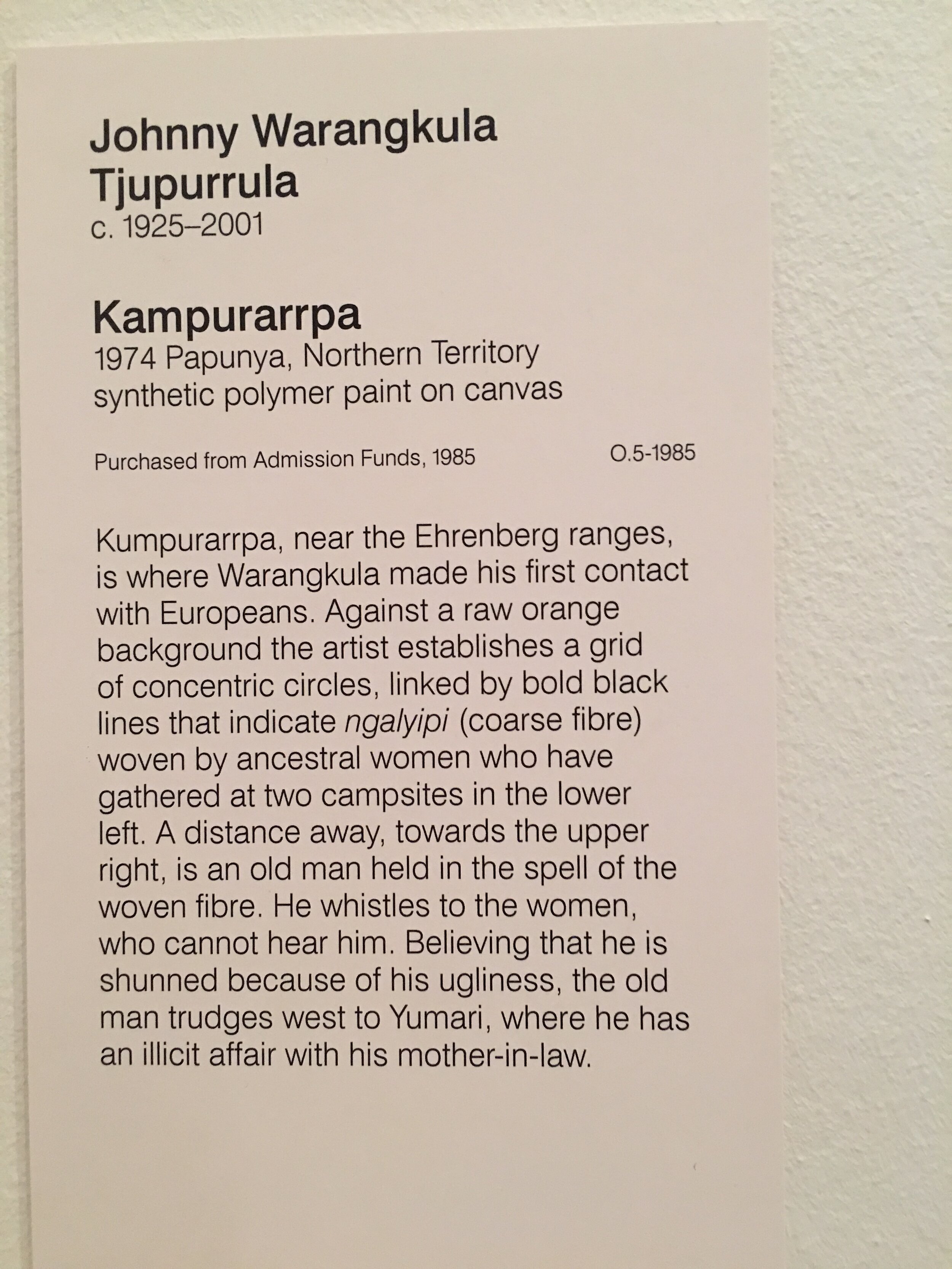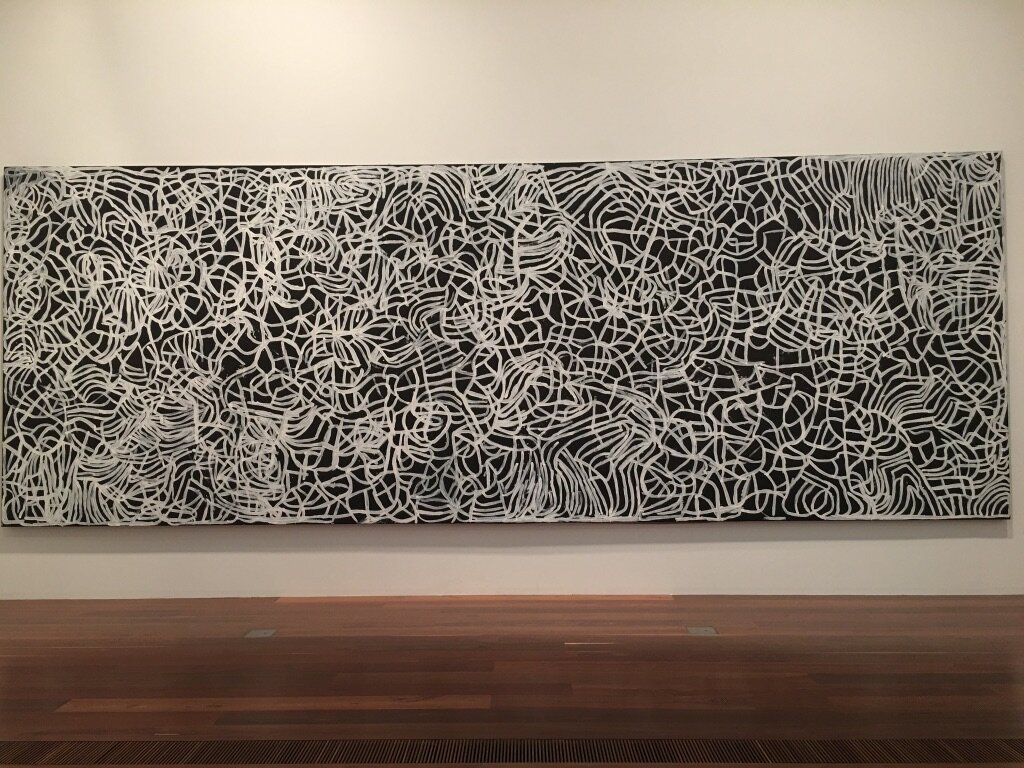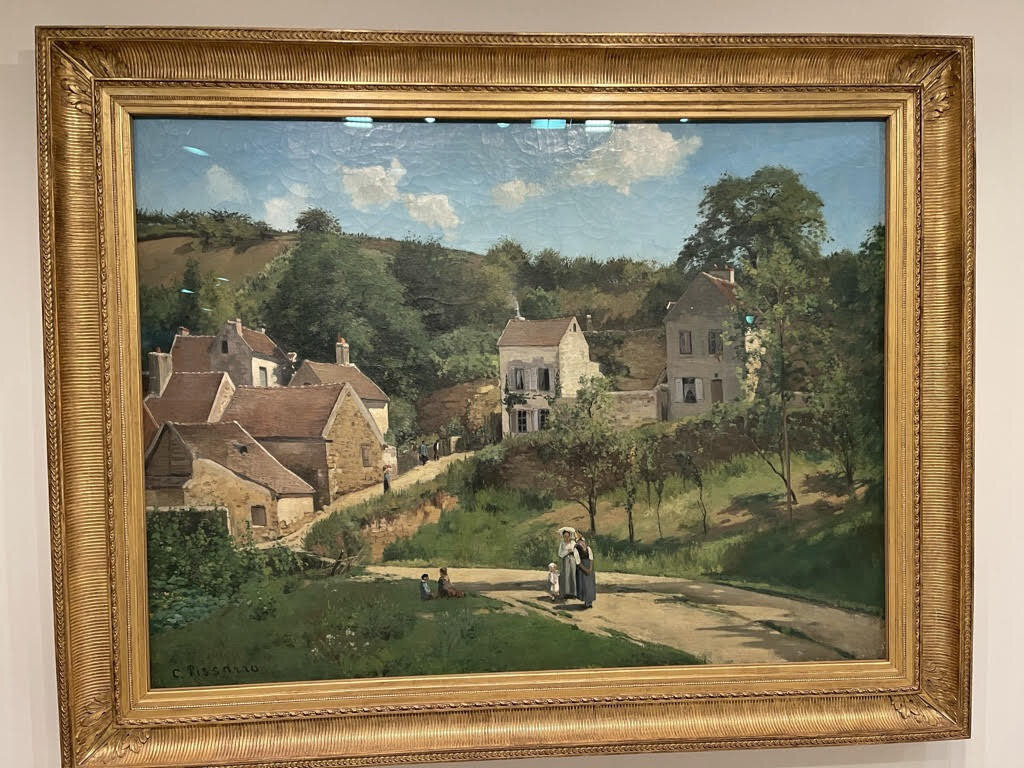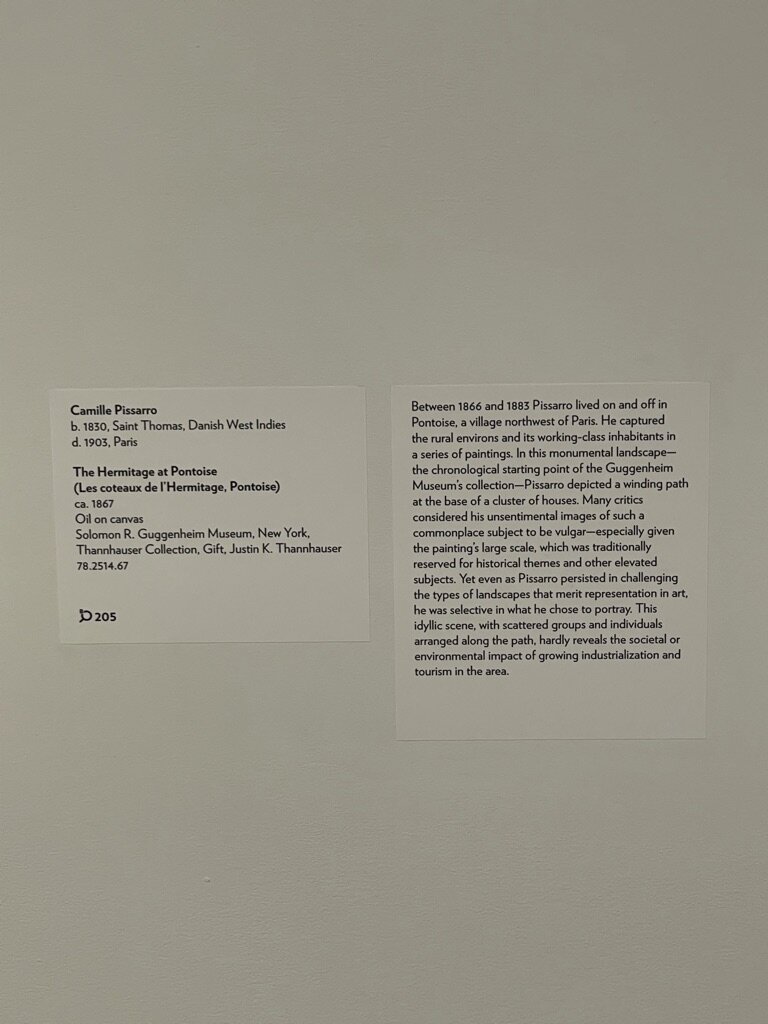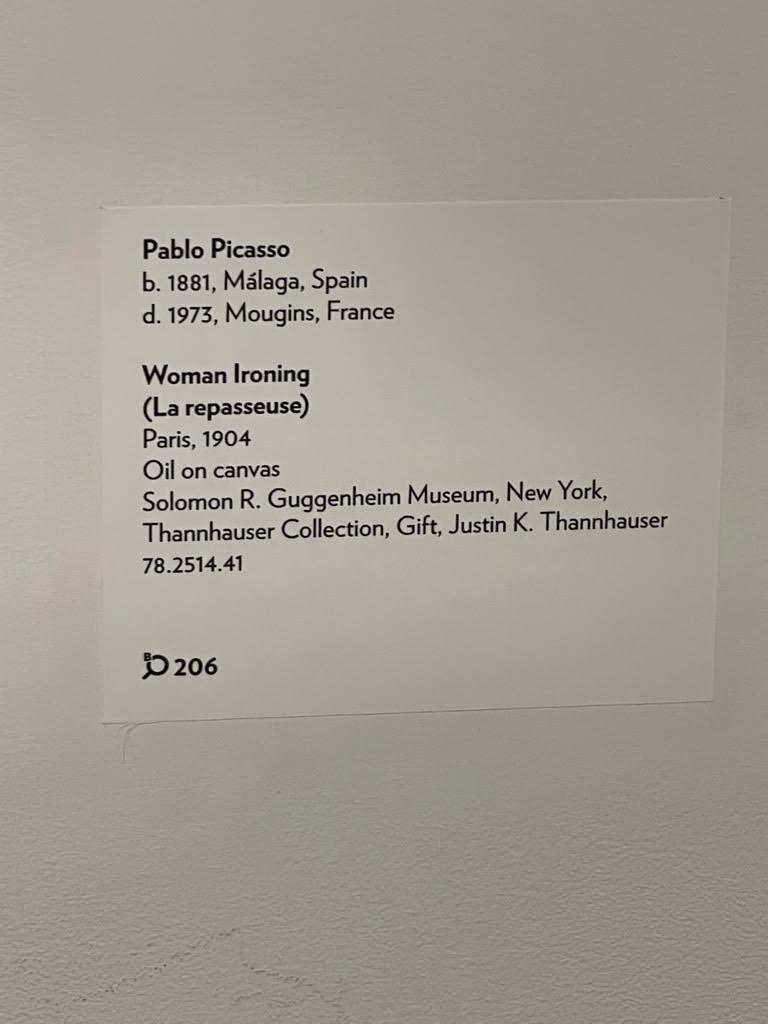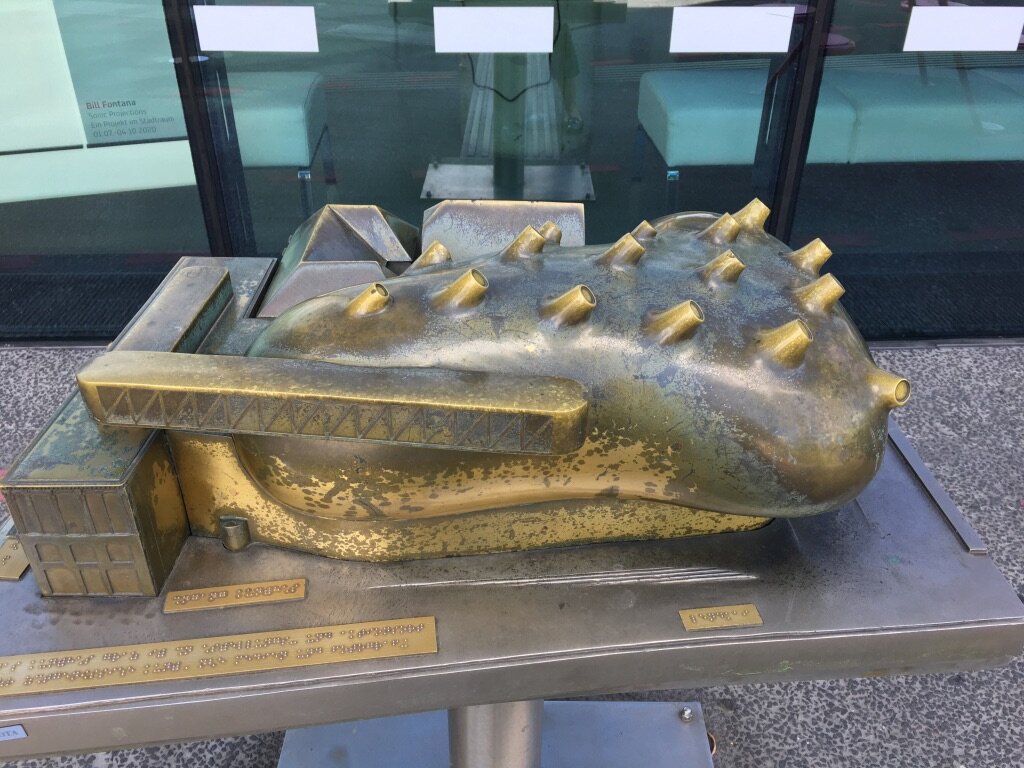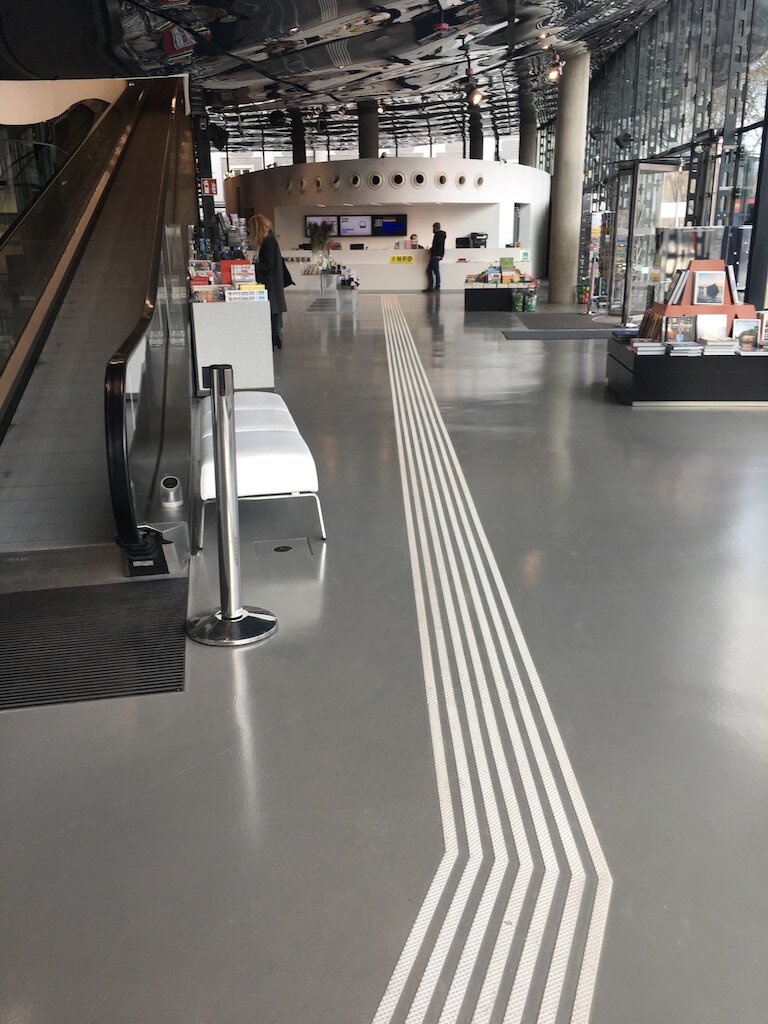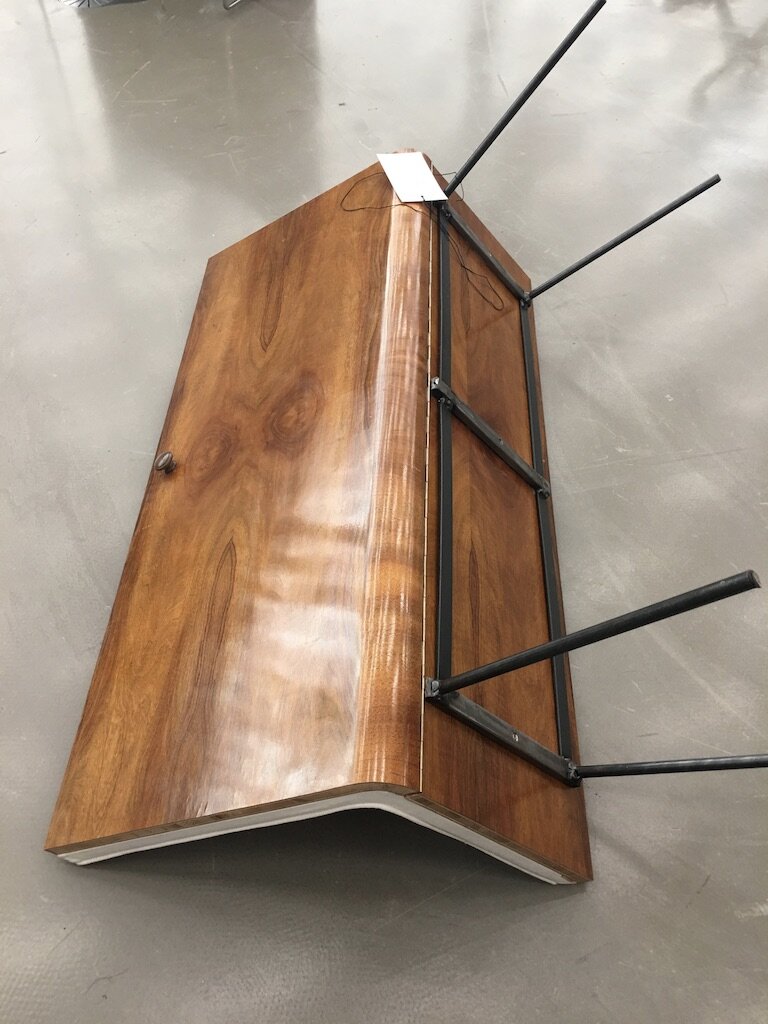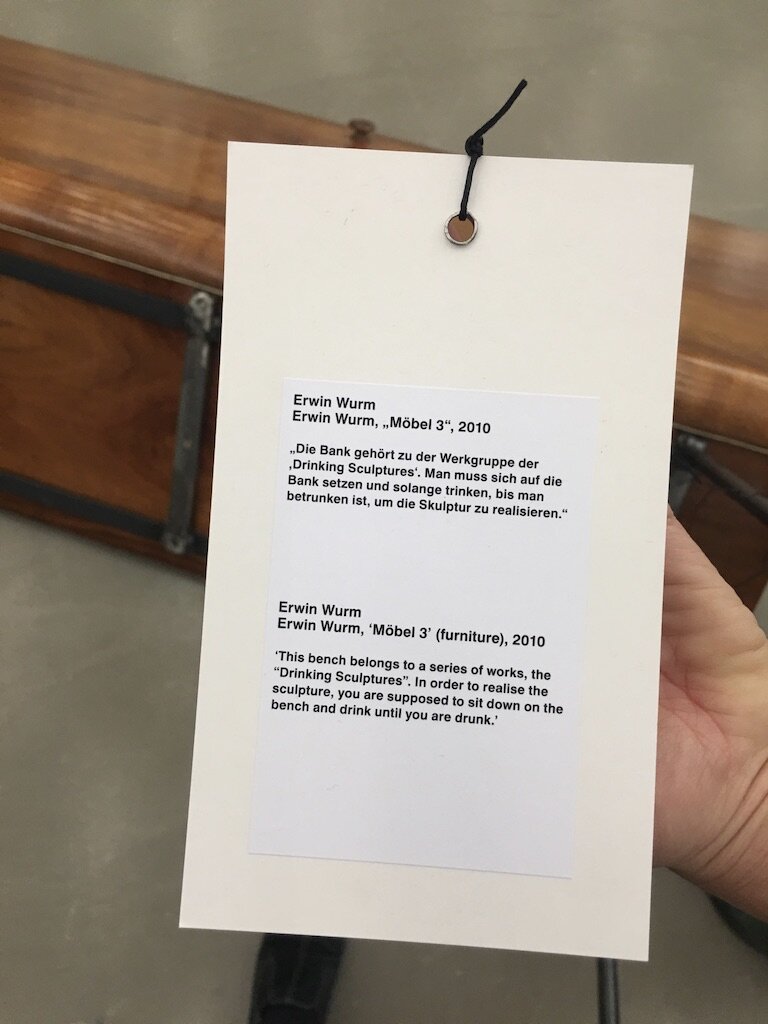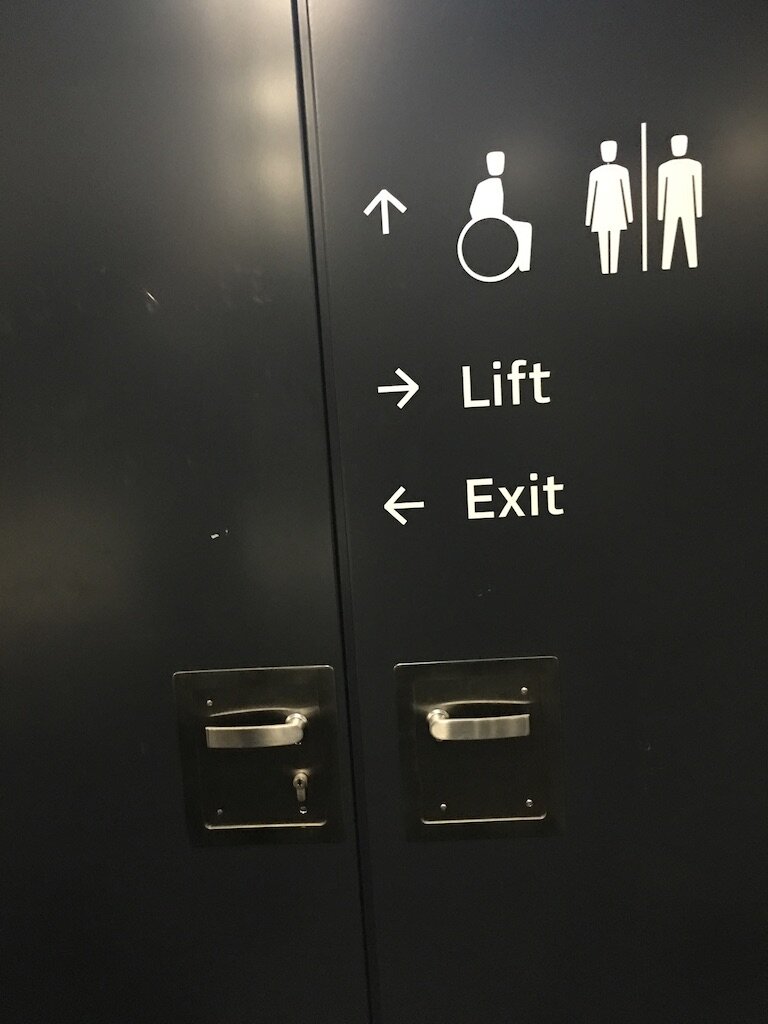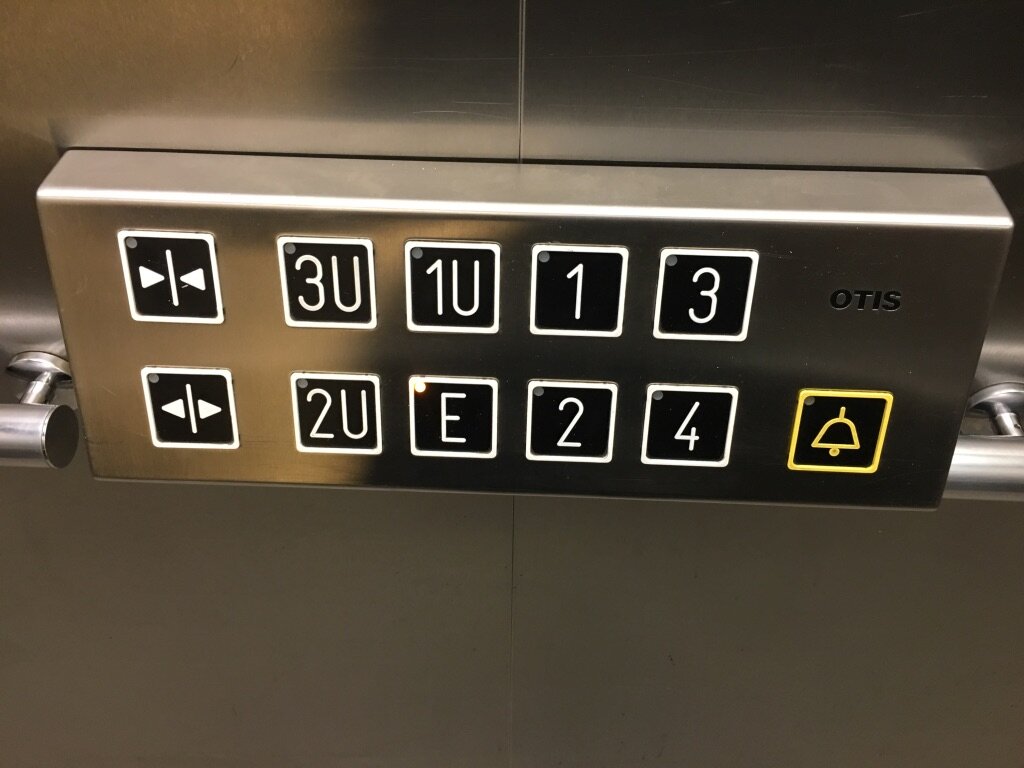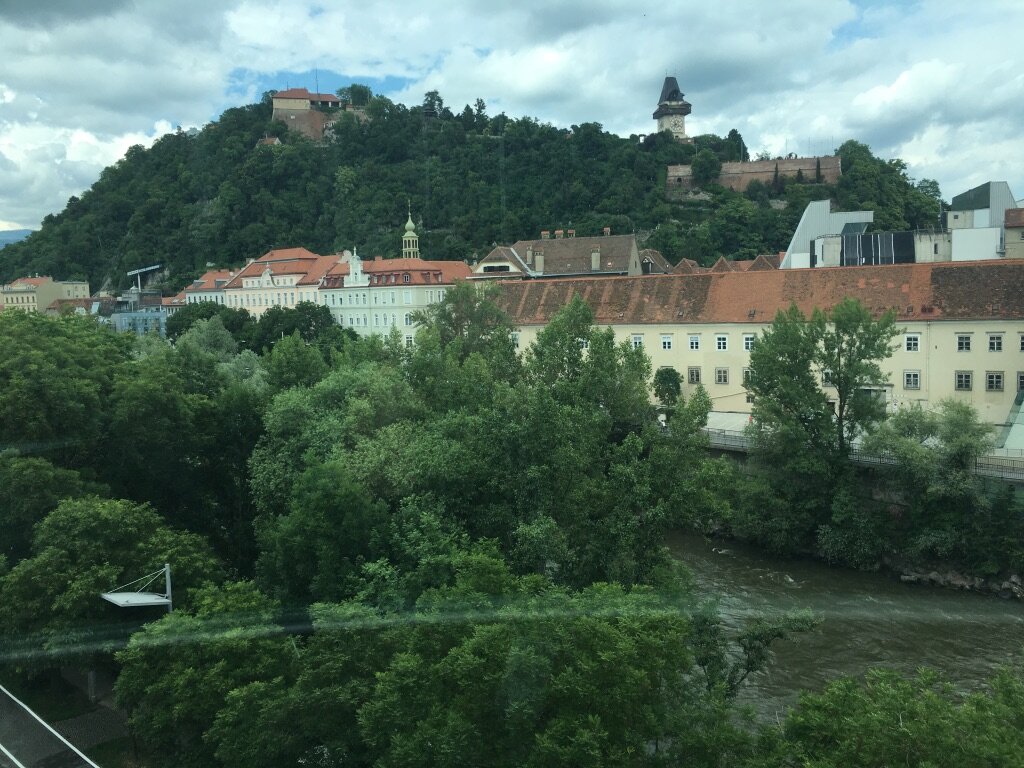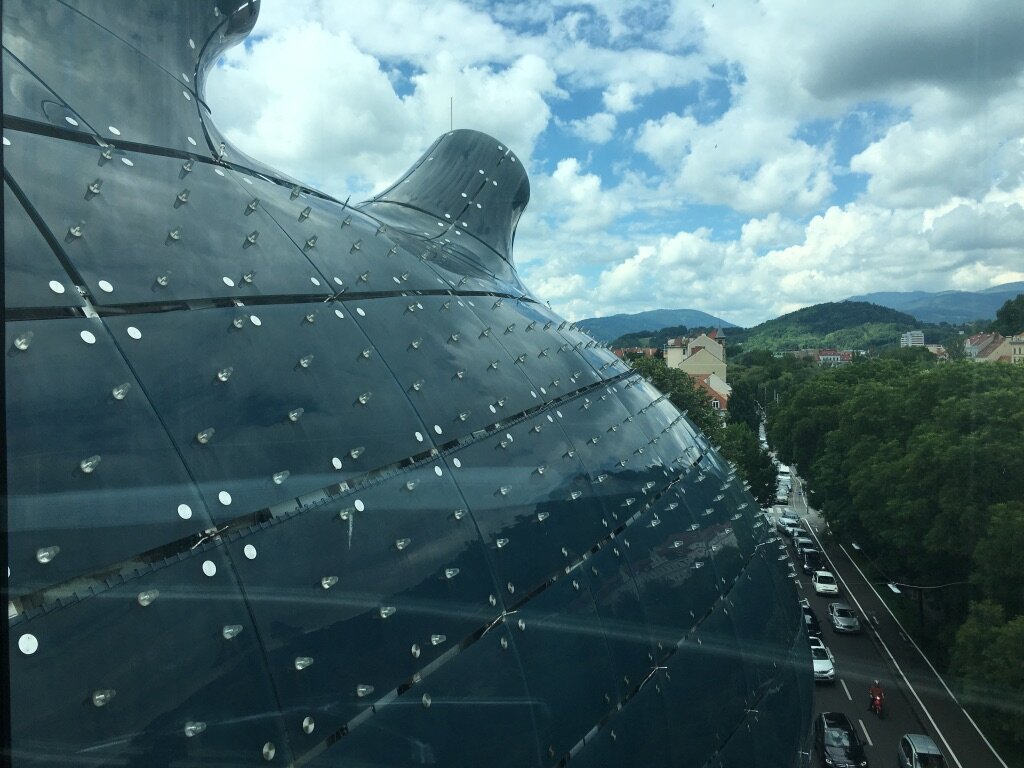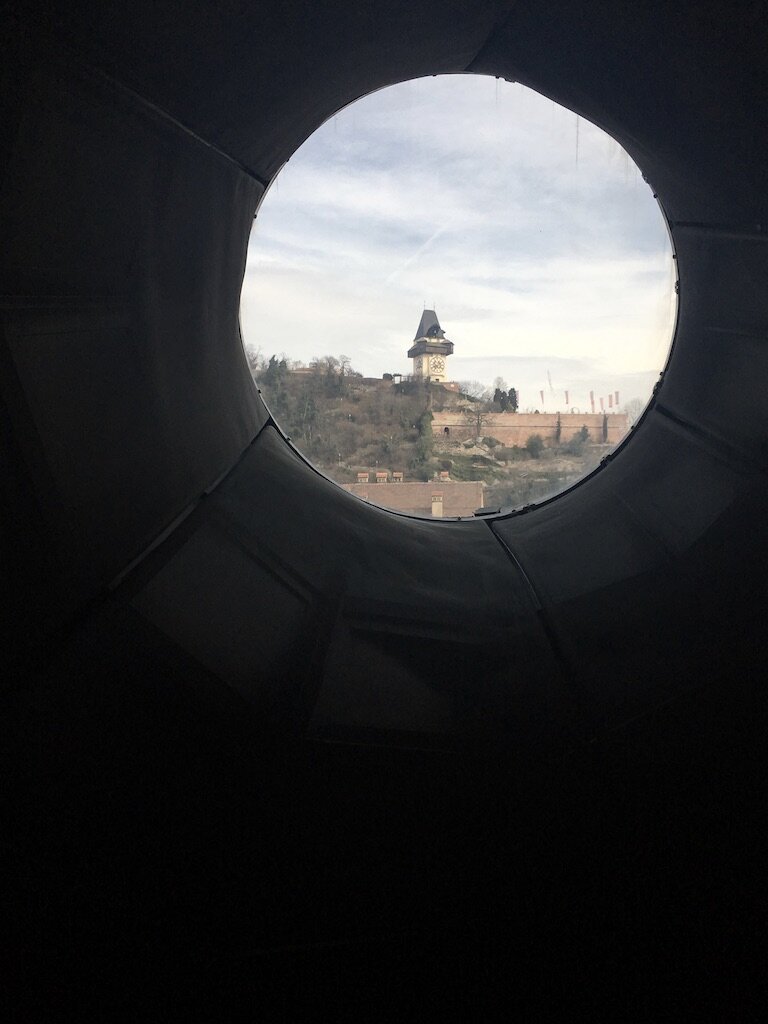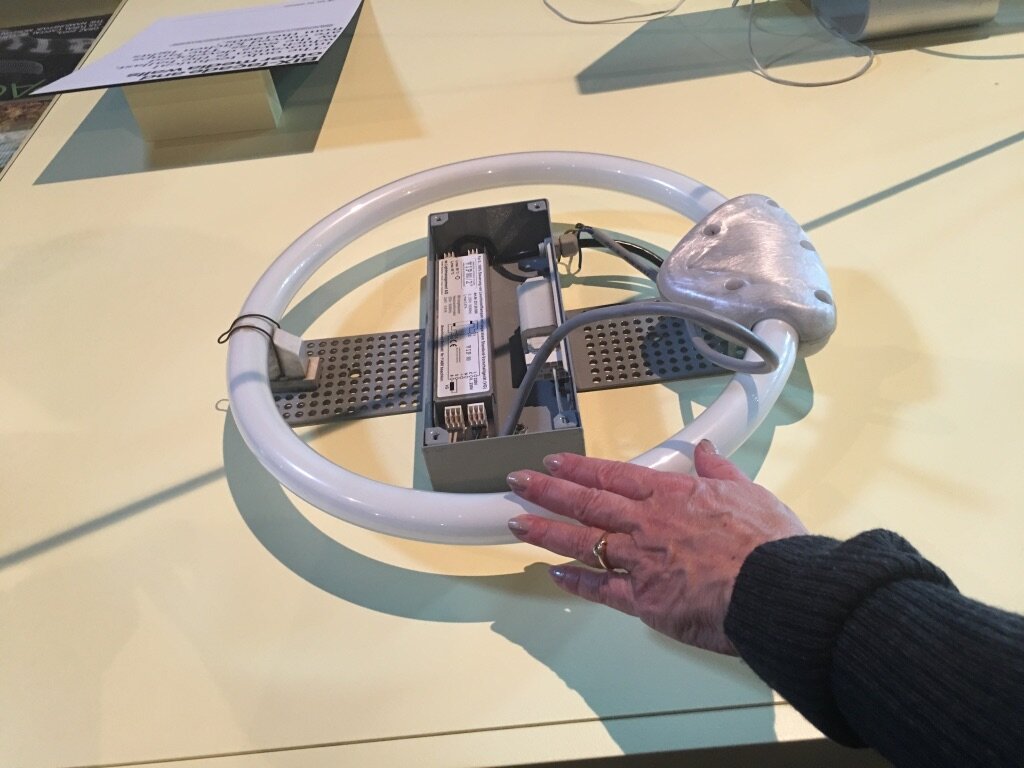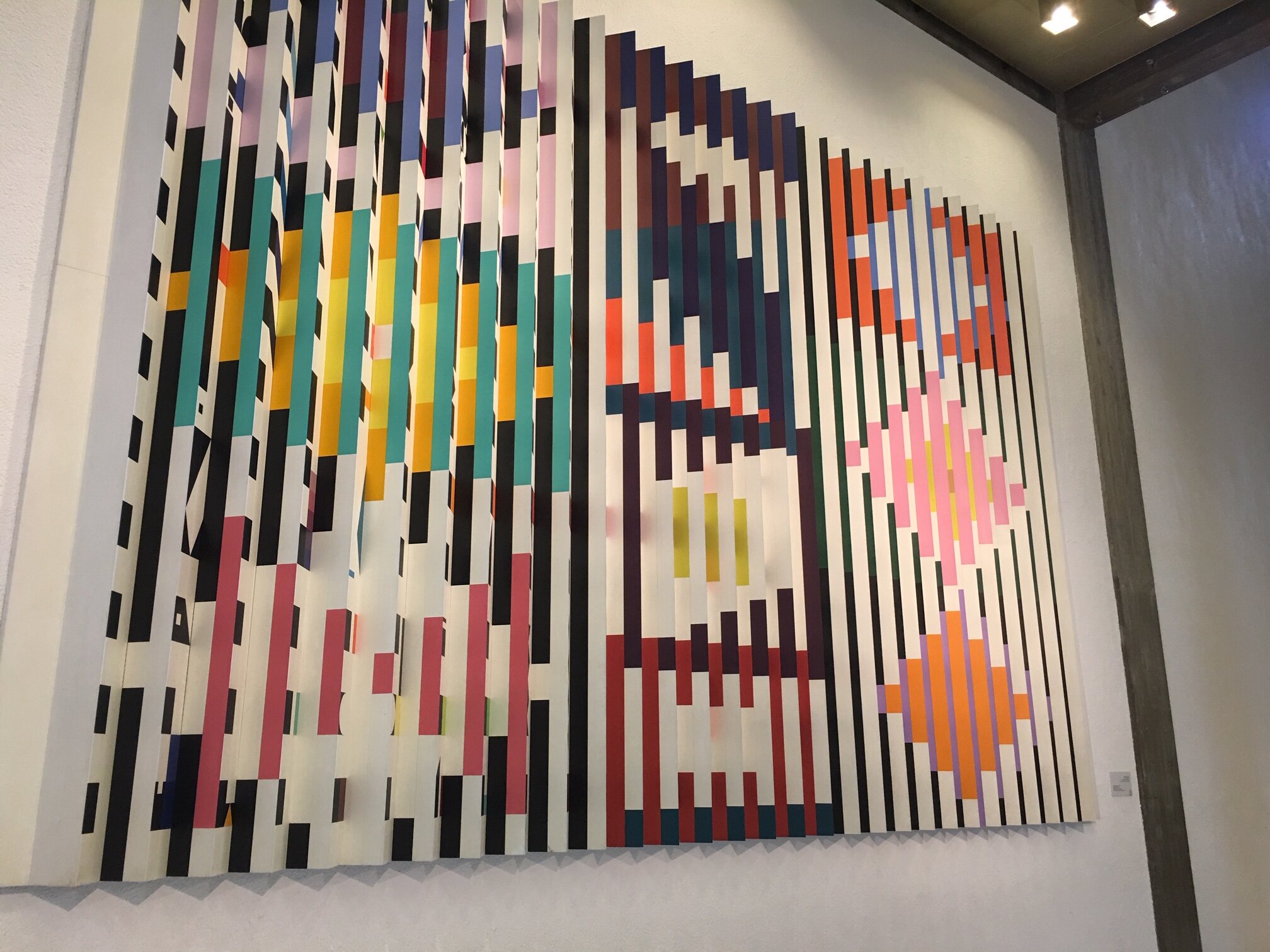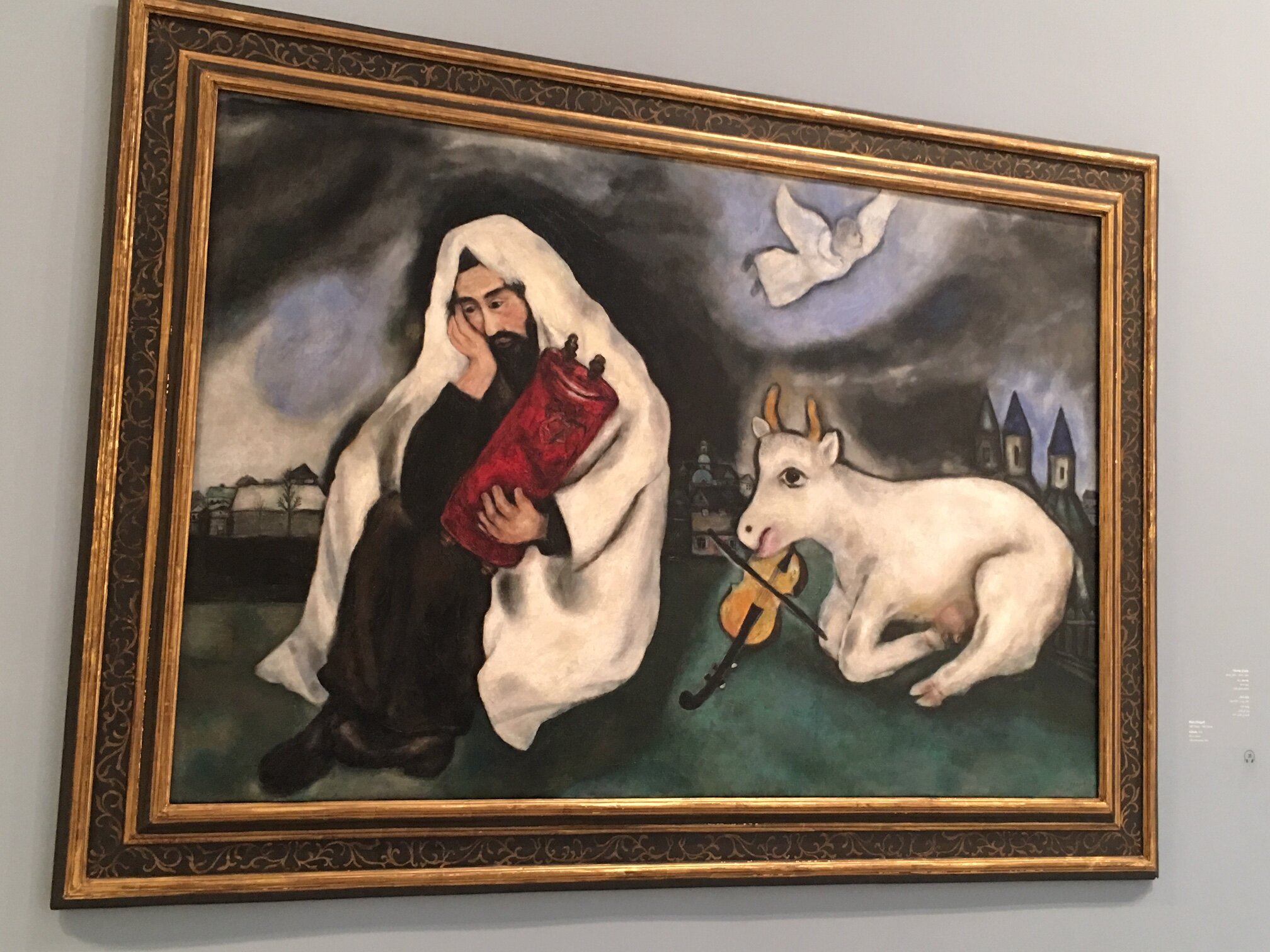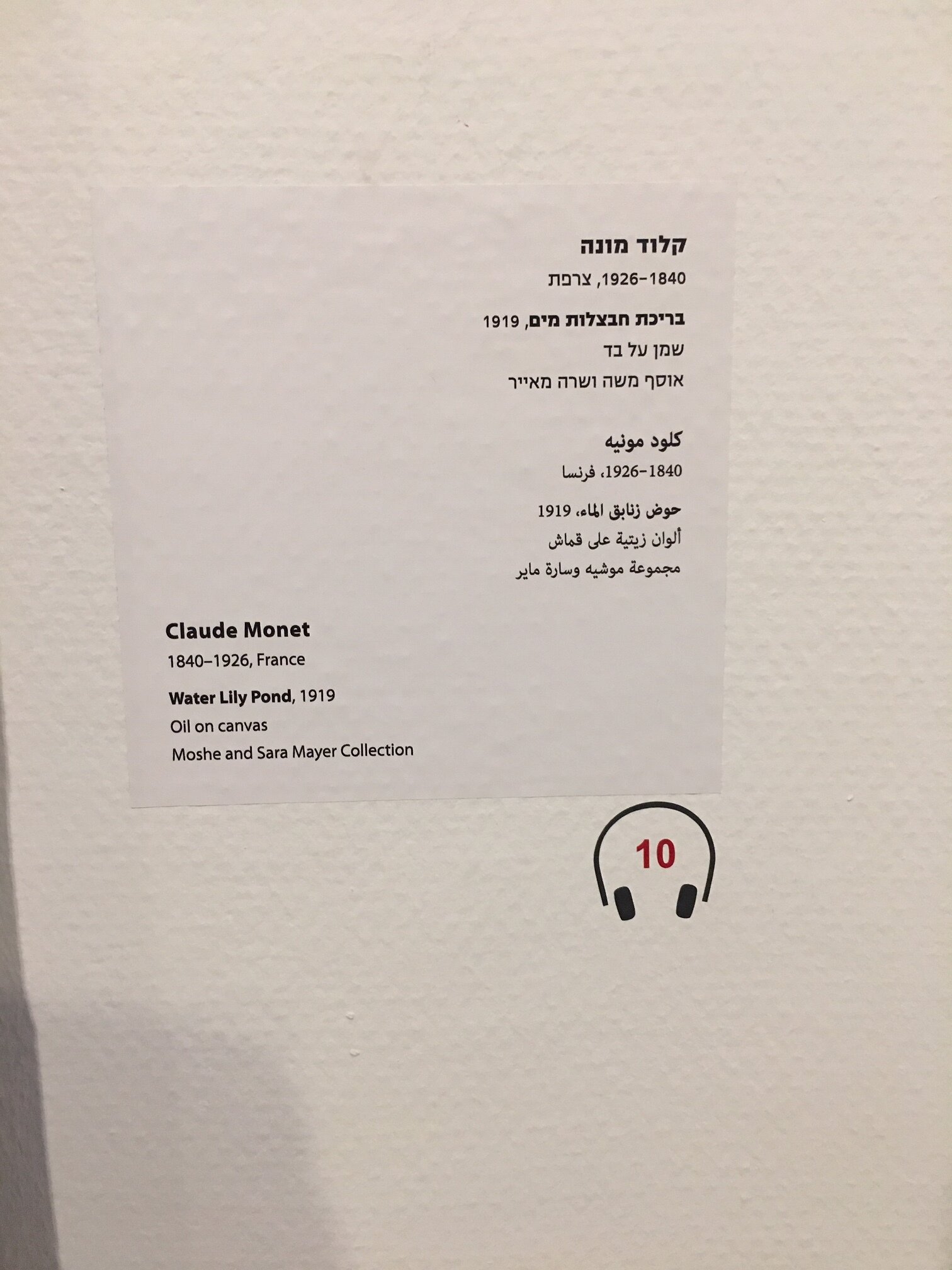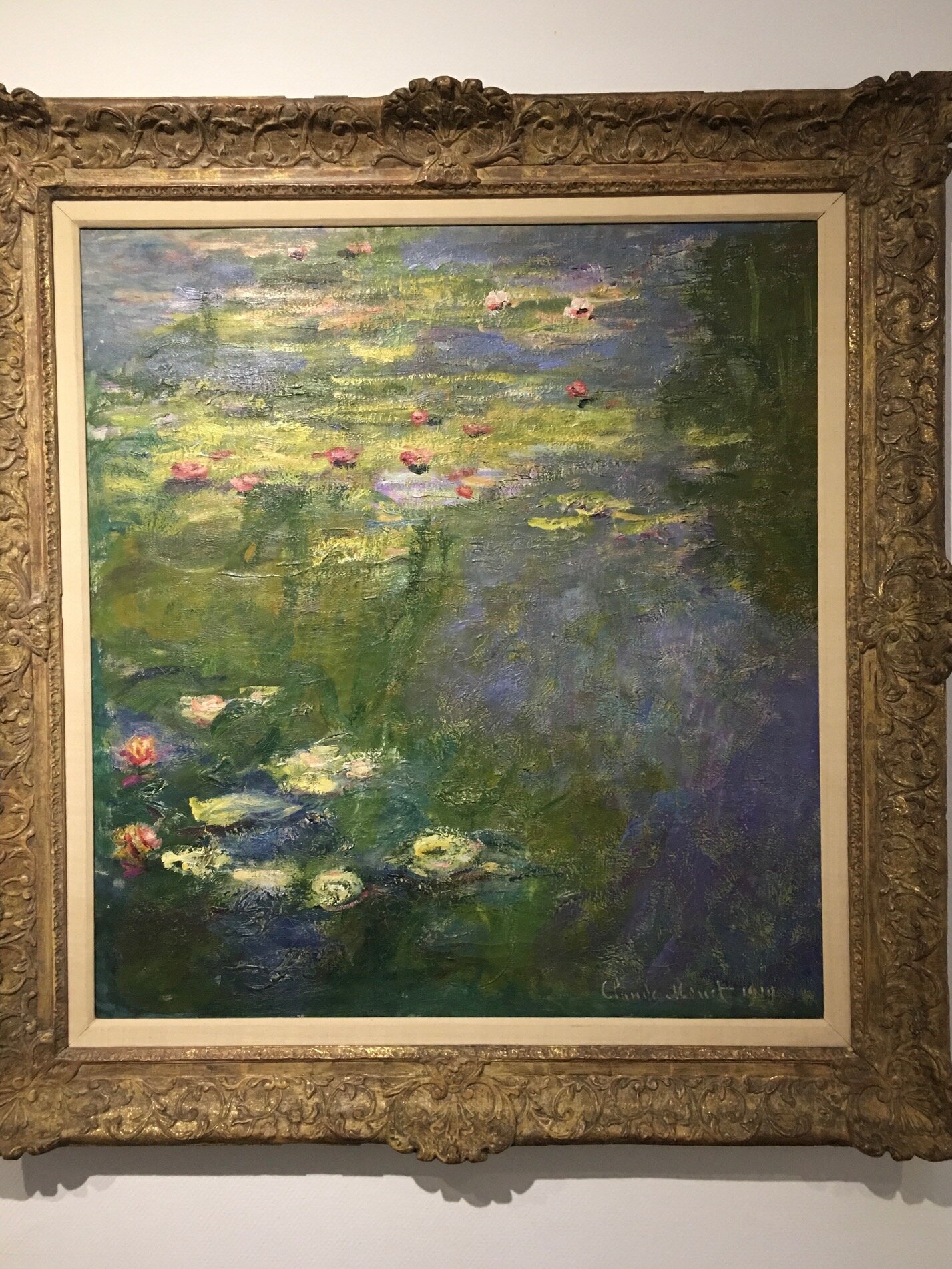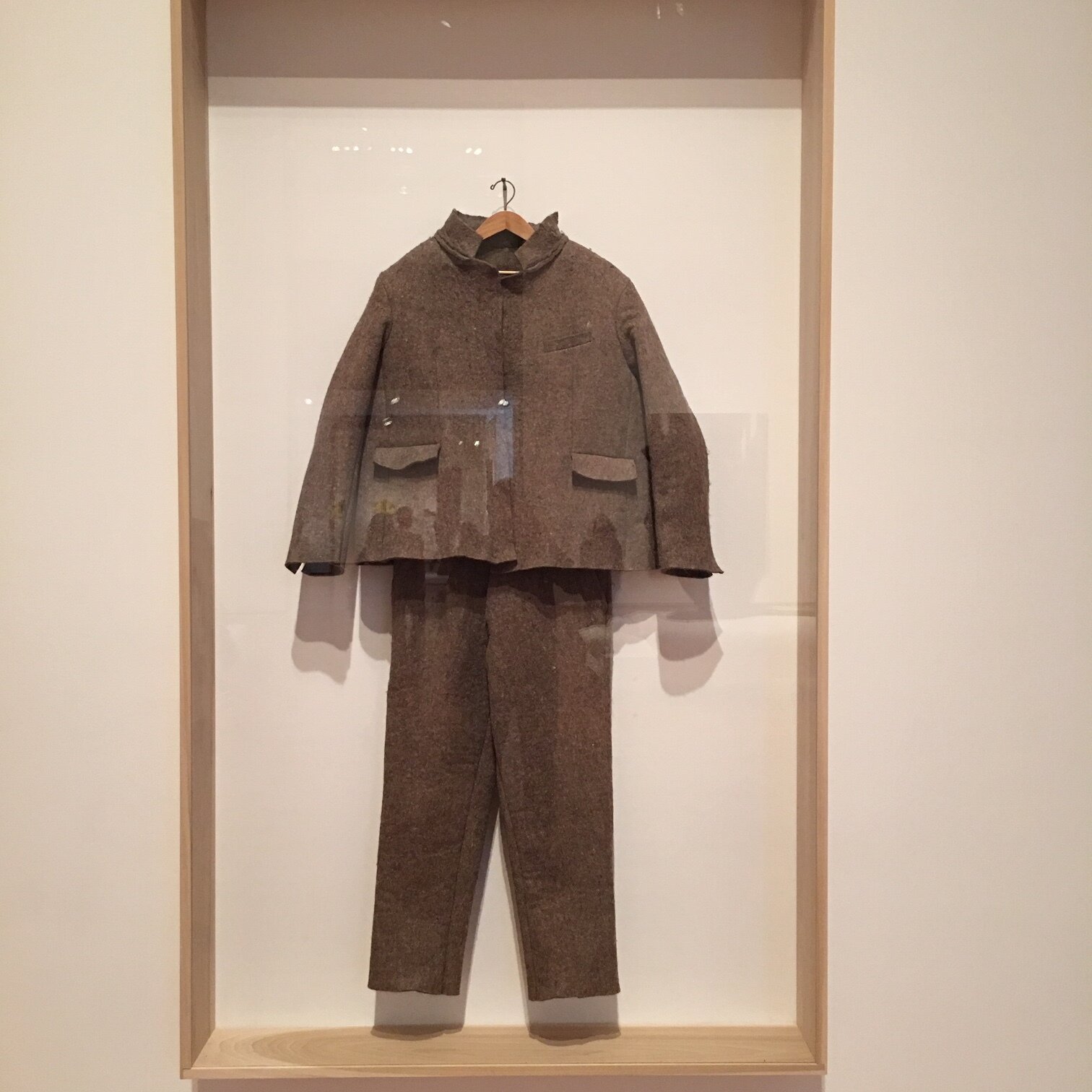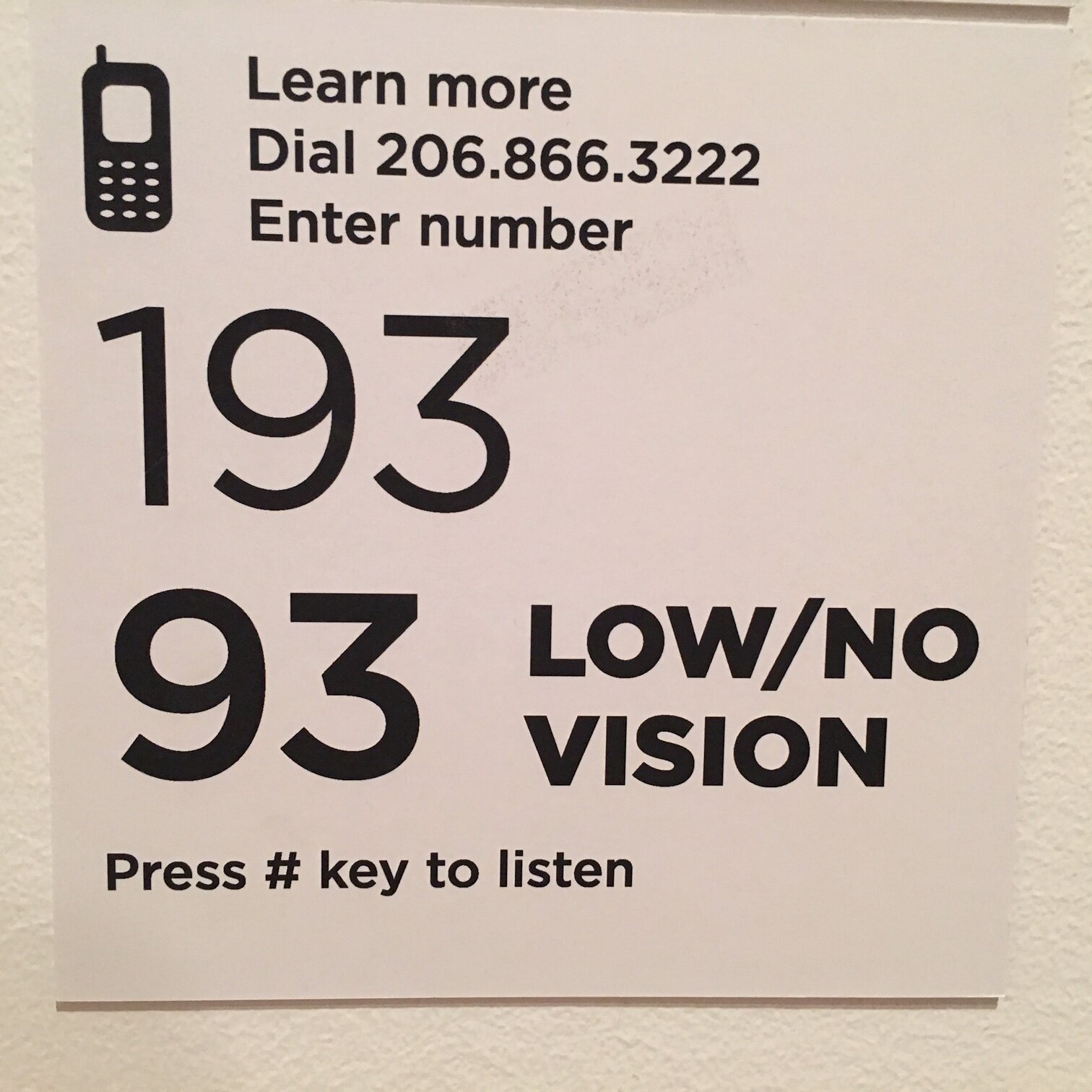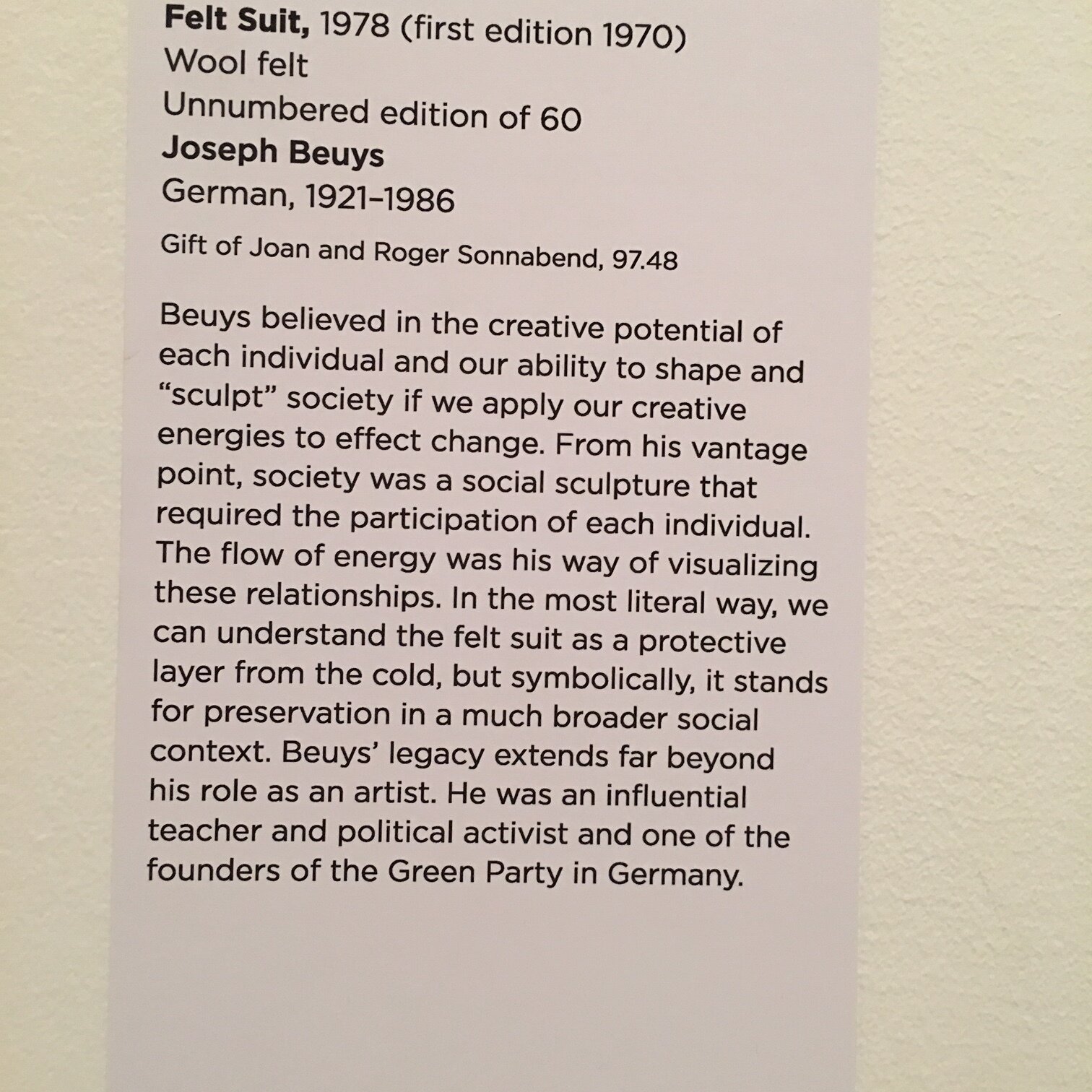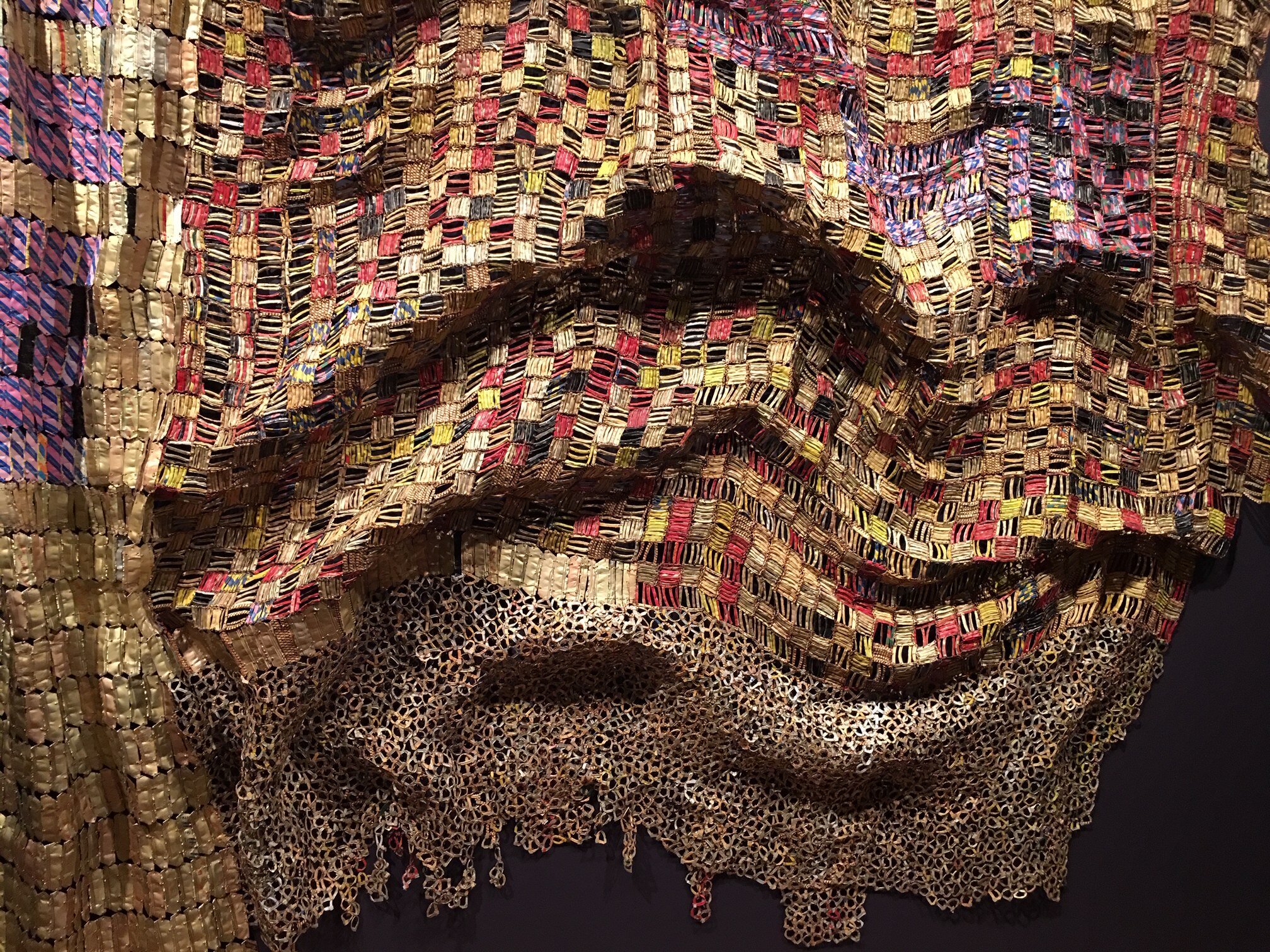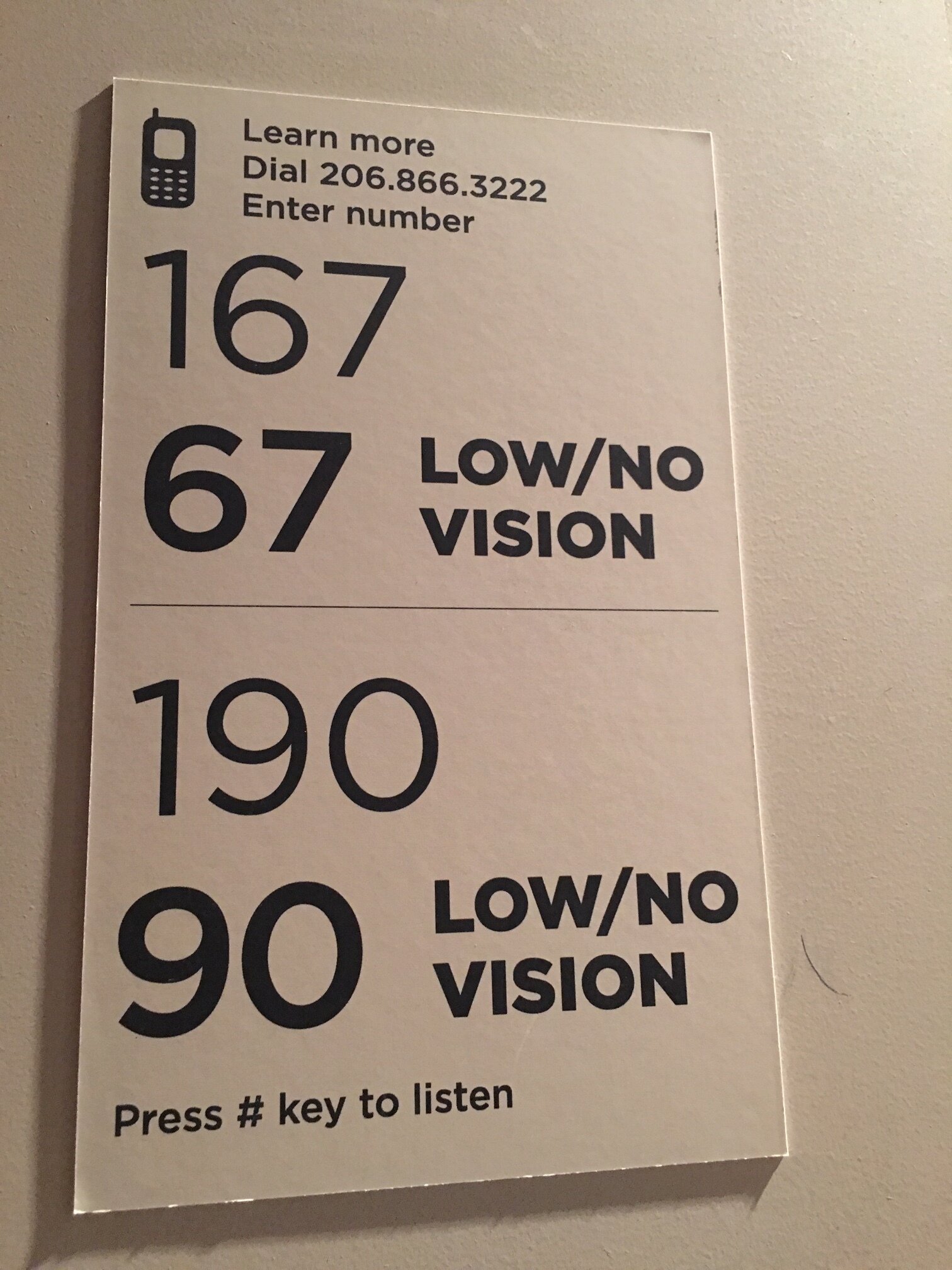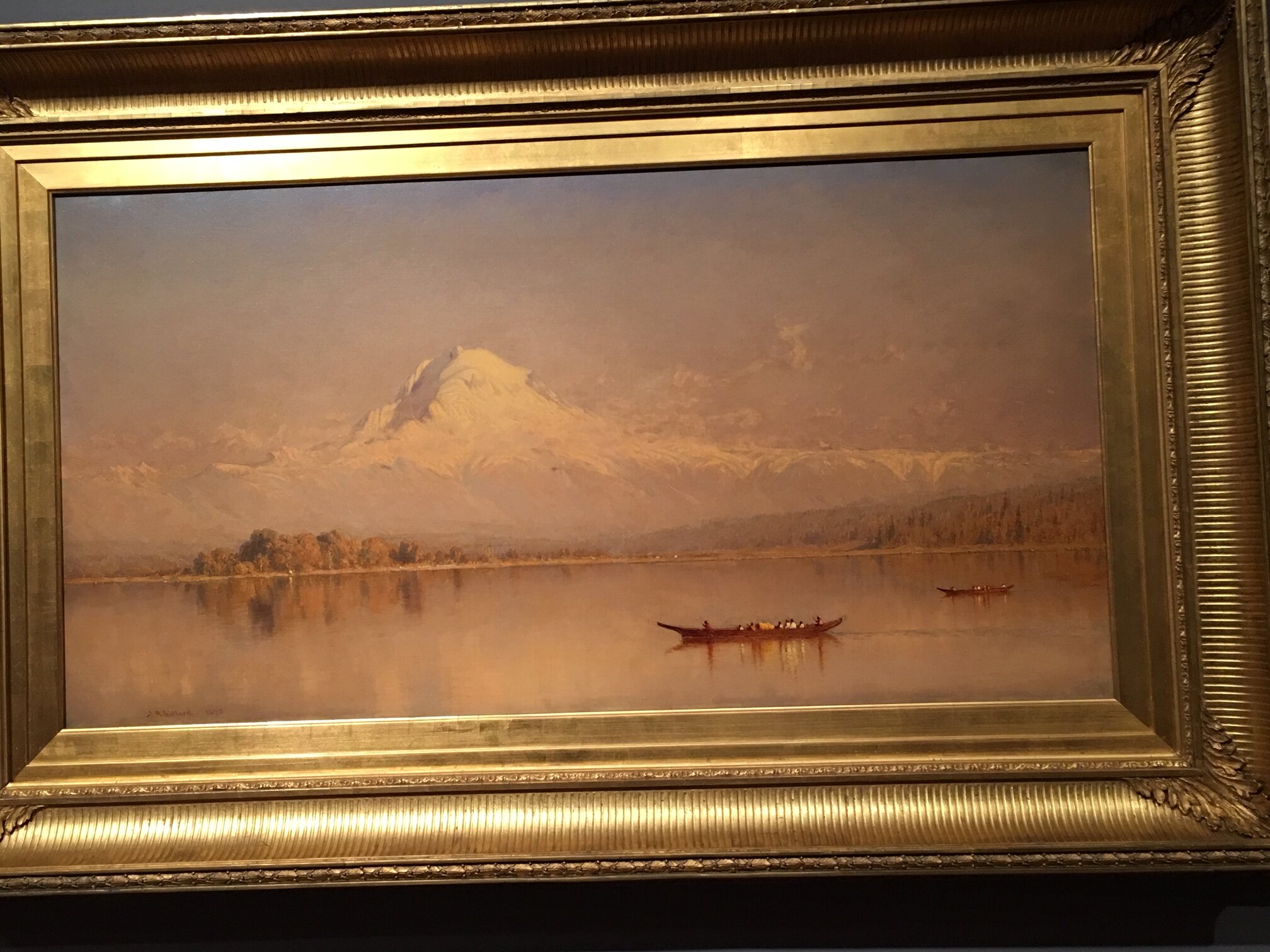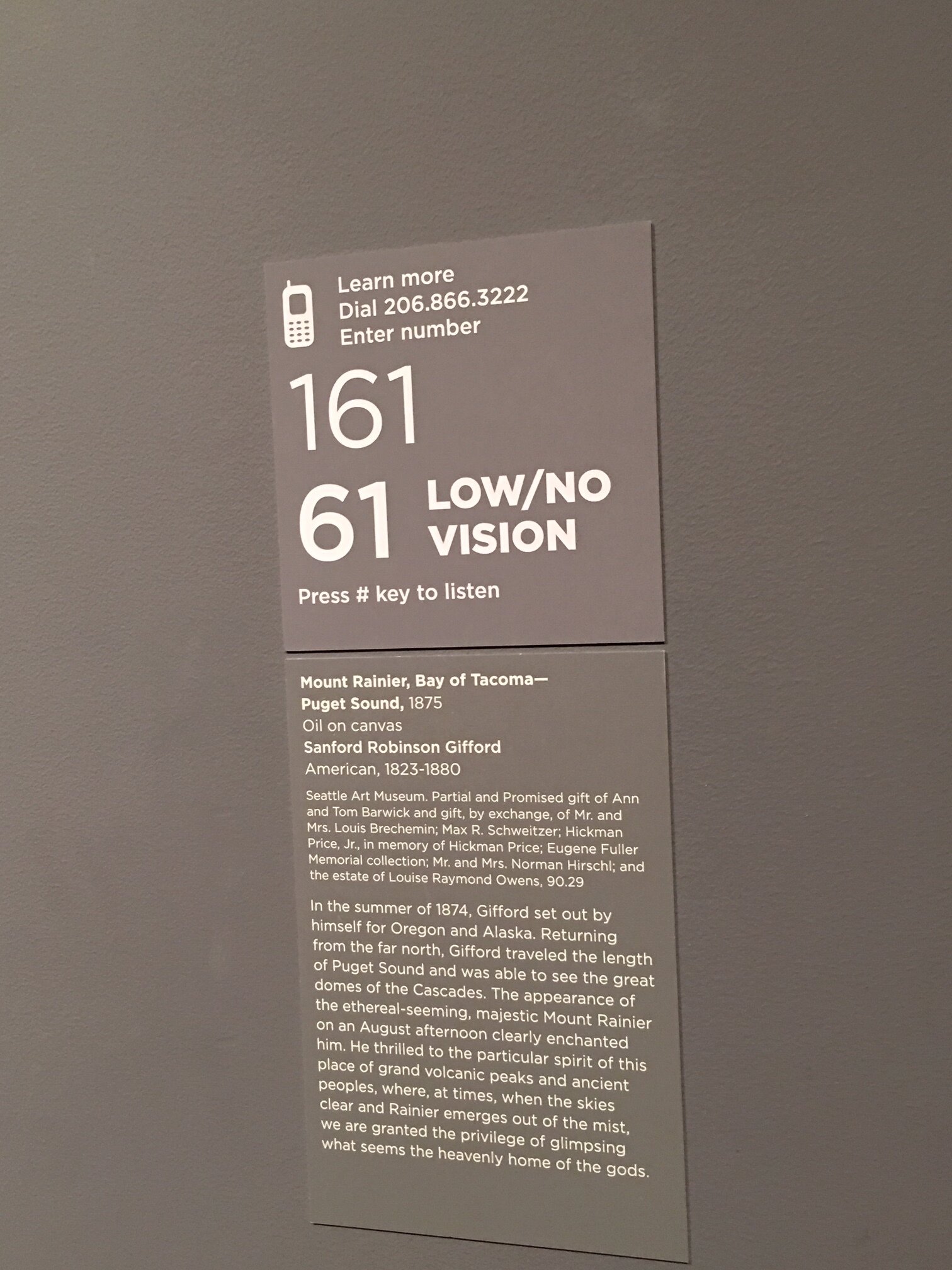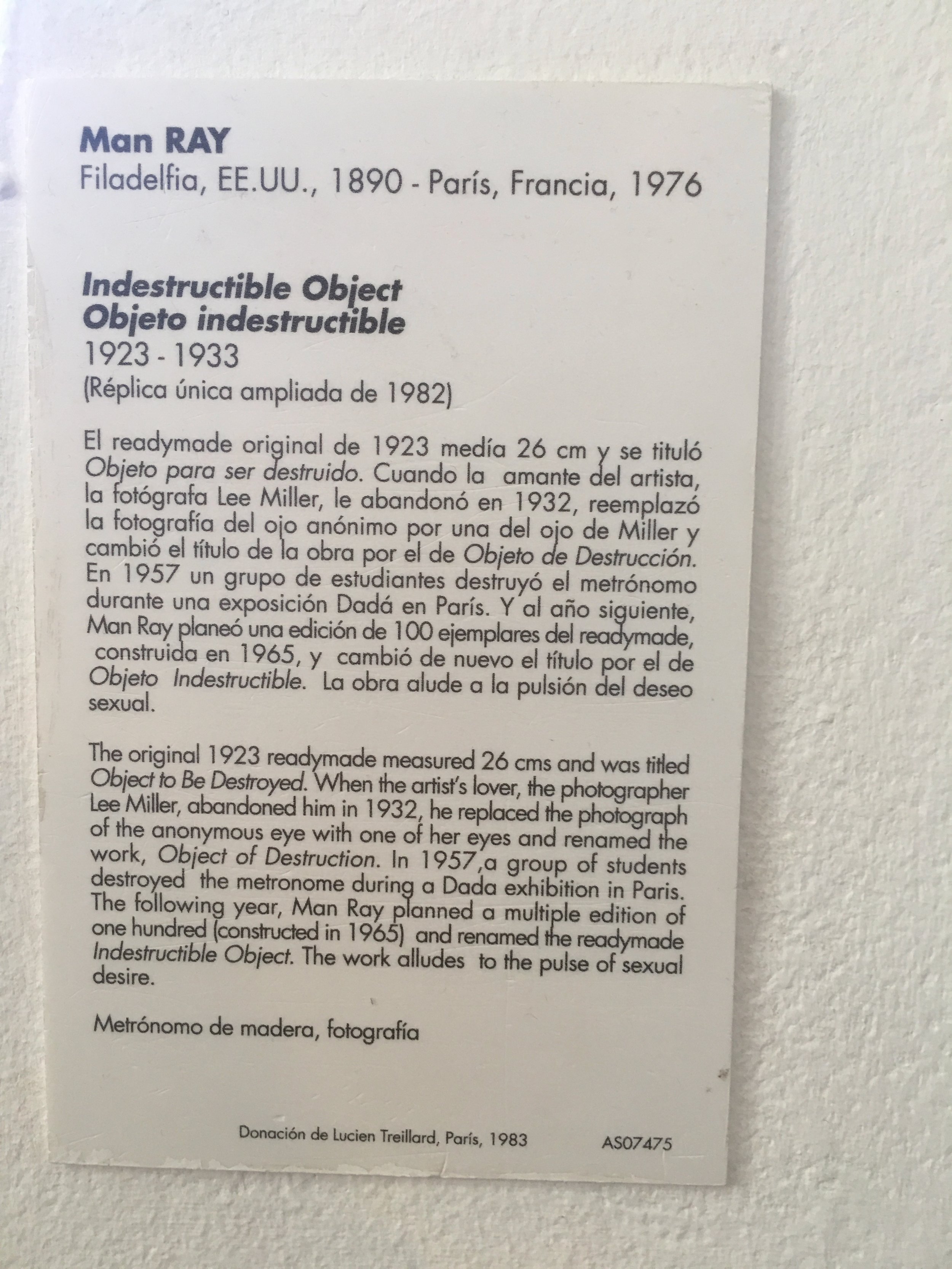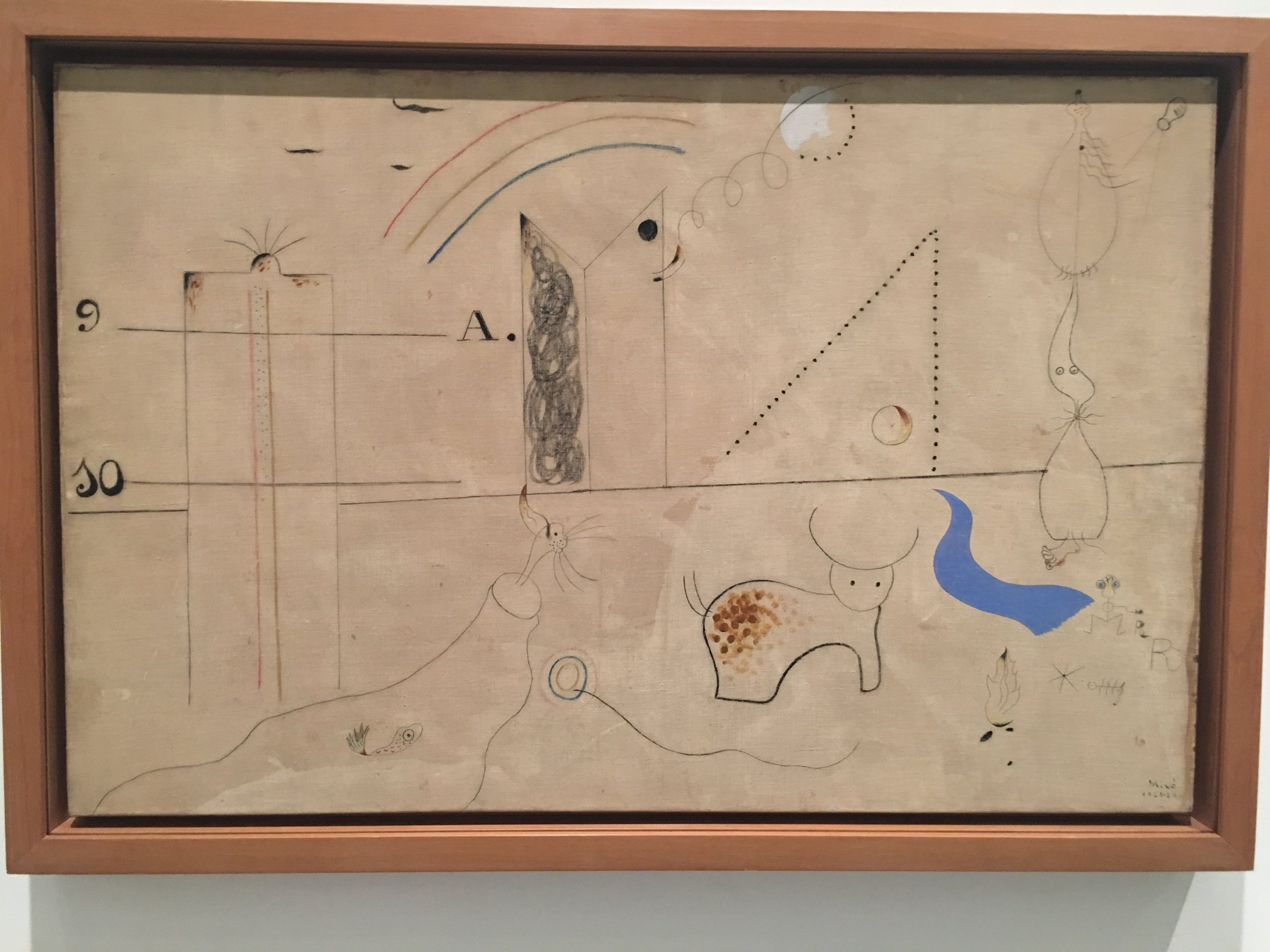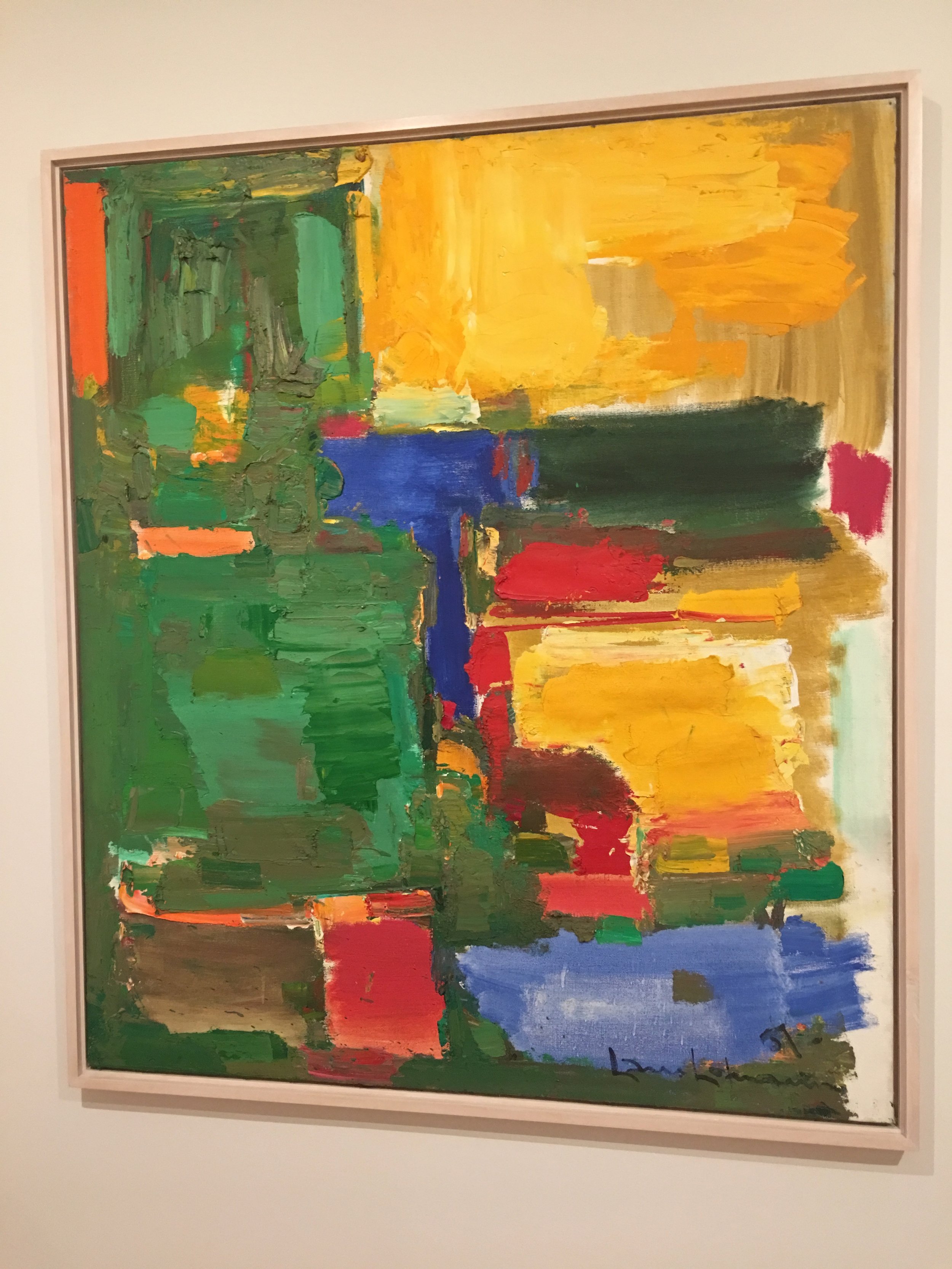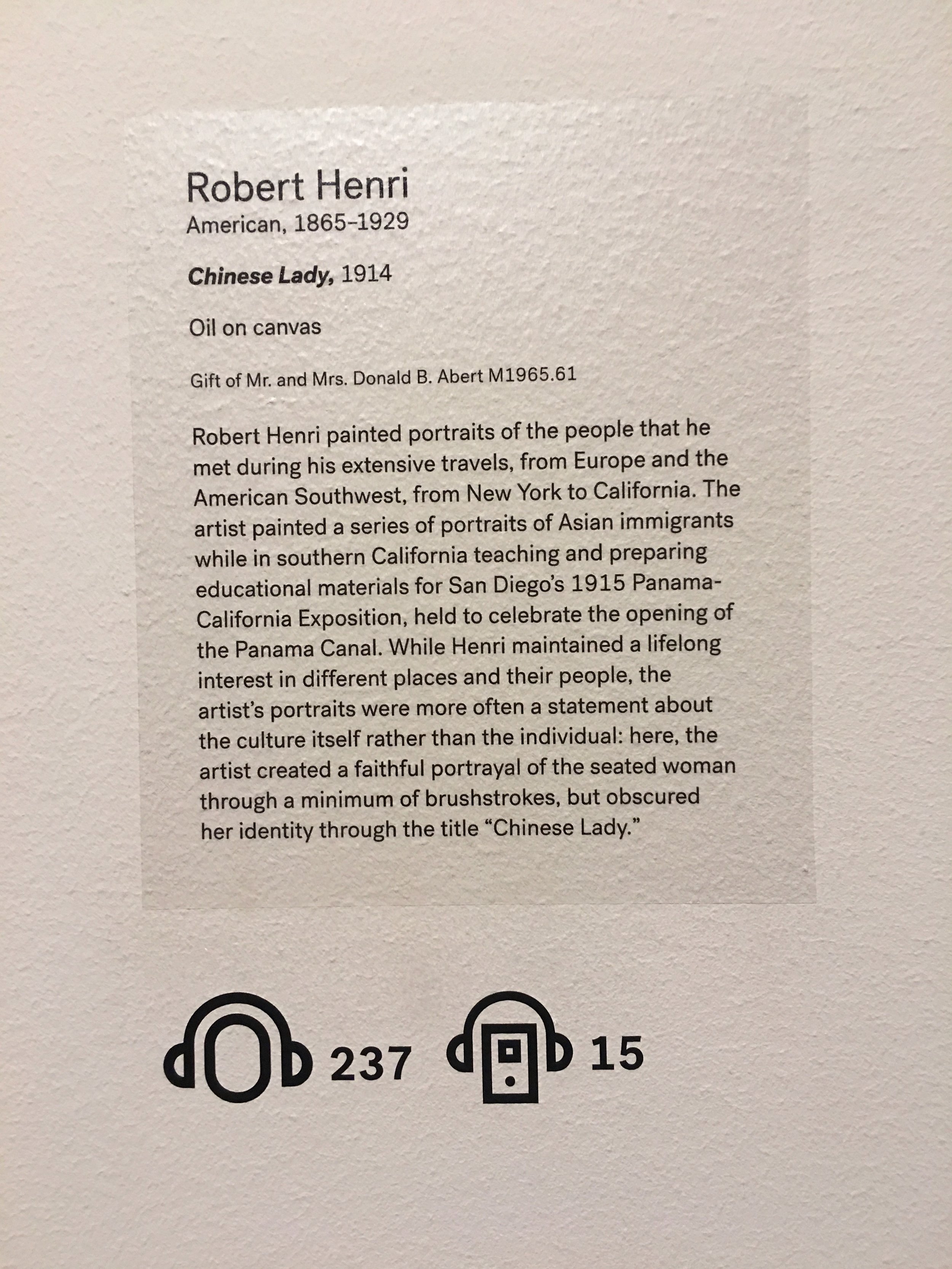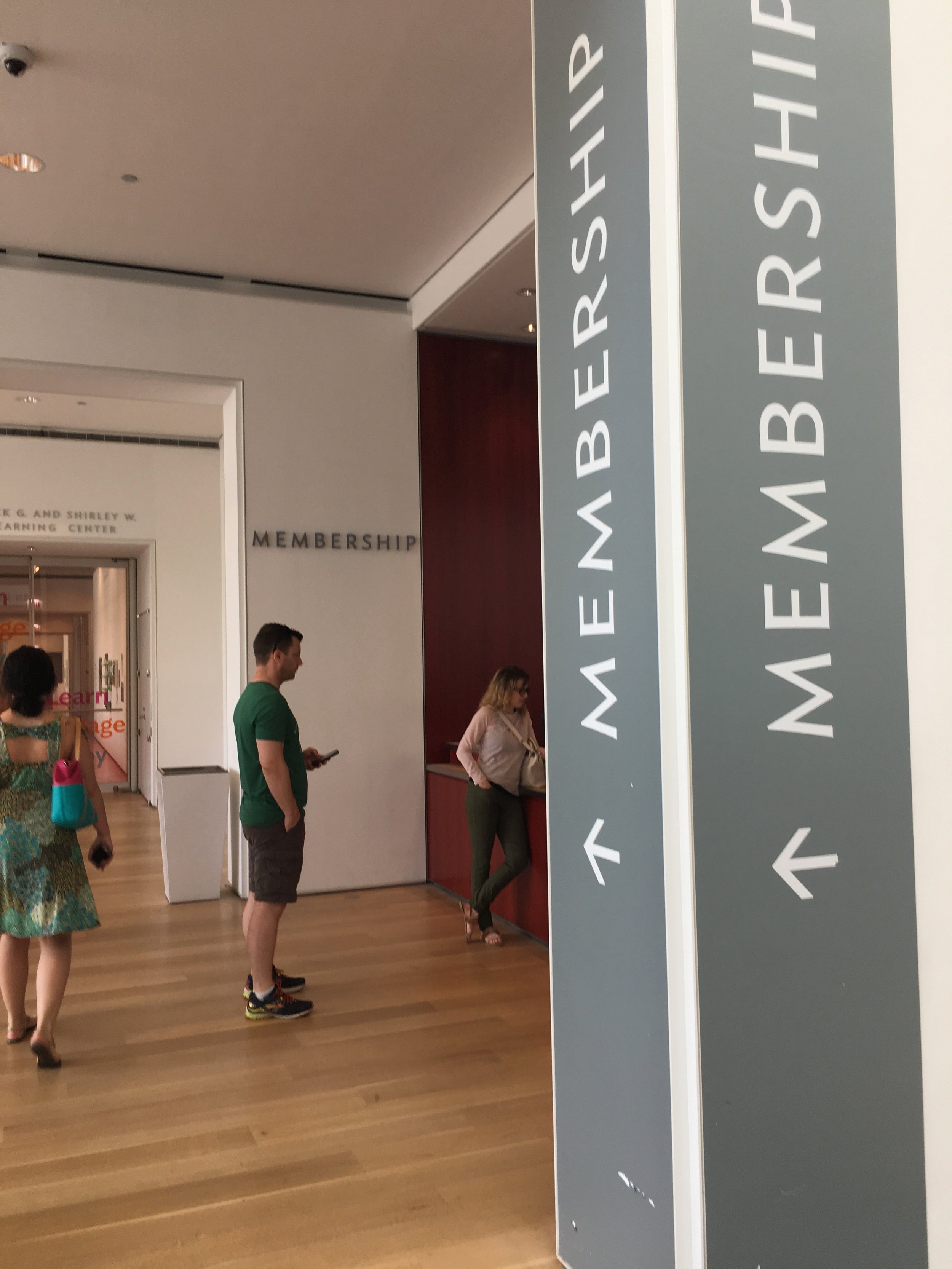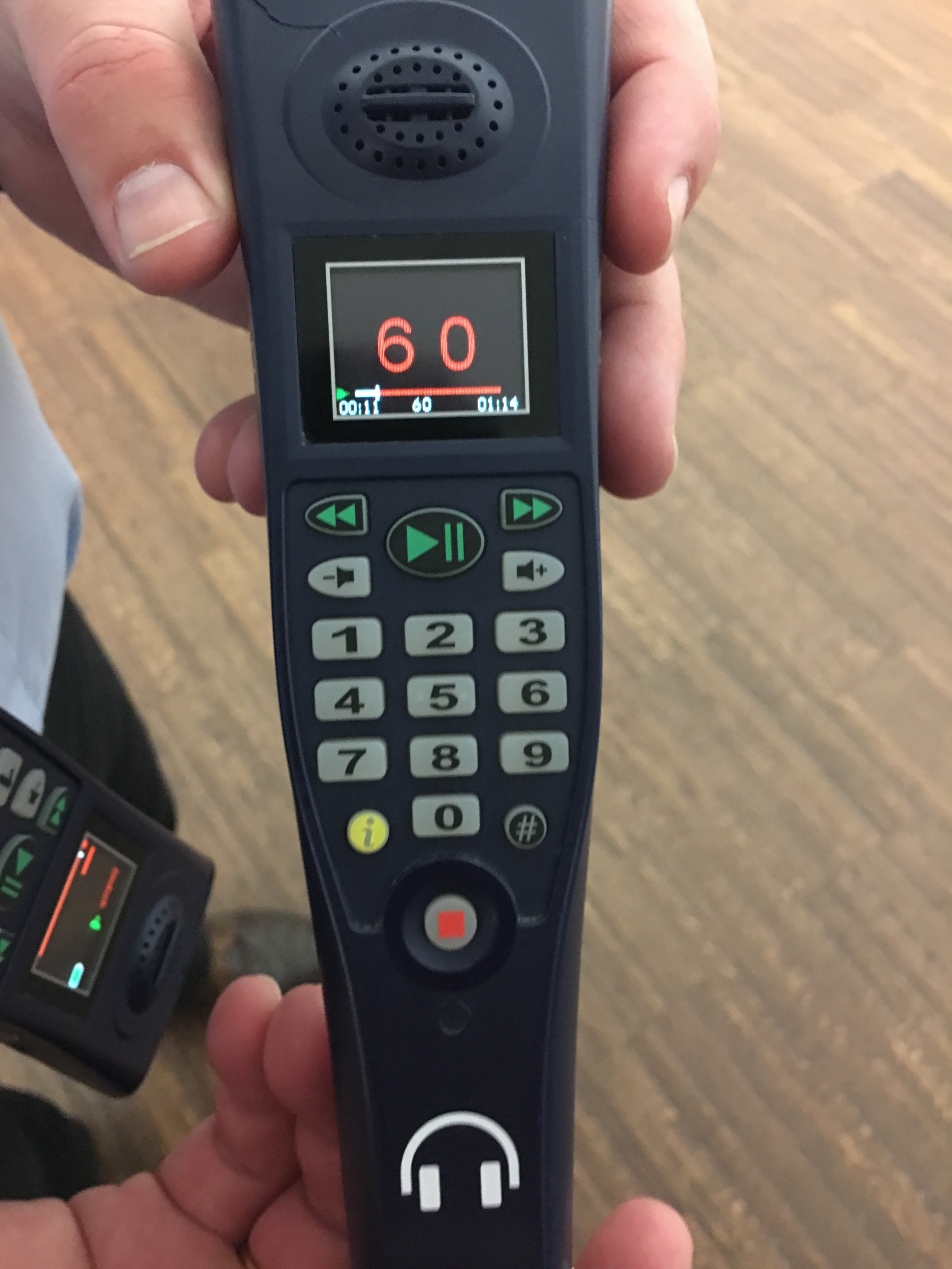Photo ID: Entrance to the High Museum, a three-story building made of interlocking geometric shapes with a white facade.
Address
1280 Peachtree Rd NE
Atlanta, GA 30309
Telephone
(404) 733-4400
Website
To read a summary of the blog, please click the In Short button:
WHAT I LIKED: I liked the focus of the collection and the architecture very much.
WHAT I MISSED: An audio guide and/or app with verbal descriptions would have been helpful.
About the Museum
One of our road trips in 2022 led us from Raleigh, NC, via the Blue Ridge Parkway, through Asheville and the Smoky Mountain National Park to Atlanta, Georgia. We enjoyed this beautiful drive through amazing landscapes and history very much and ended this adventure with a visit to “The High.”
The museum was founded in 1905 and had its first permanent location in the family house of the High family in 1926.
A new museum complex designed by Richard Meier opened in 1983. In 2005, Renzo Piano designed three new buildings to create more space for the growing collection, and in 2018 New York-based Annabelle Selldorf reorganized the gallery spaces leading the museum to its current form.
The permanent collection includes more than 18,000 artworks across seven collecting areas: African art, American art, decorative arts and design, European art, folk and self-taught art, modern and contemporary art, and photography.
Photo ID (left): El Anatsui (Ghanaian, born 1944), Taago, 2004, aluminum and copper wire
Photo ID (right): Detail of Taago
Entrance and Galleries
The layout of the museum is a bright and easy-to-navigate space with amazing viewpoints and interesting angles to observe. The galleries have a good light system, clear signage, and a sensory map to make navigation easy.
Photo ID: Gallery space
Labels and Audio Guide
My first concern in any new museum is always the labels—will I be able to find them, will I be able to read them with my Orcam or SeeingAI? In this museum the labels are well-designed and easy enough to find (though exceptions are always possible), so this was a great plus for me.
At this point in time there is no app or audio guide available, but you can ask for a private verbal description tour by email with a three-week notice.
Photo ID (left): Dahomey applique banner, Fon Artist, Kingdom of Dahomey, Republic of Benin
Photo ID (right): Explanation of symbols and meaning
Last, But Not Least
This museum was the perfect end point of a very enjoyable trip. The interesting collection and the intriguing architecture were a highlight for me.









